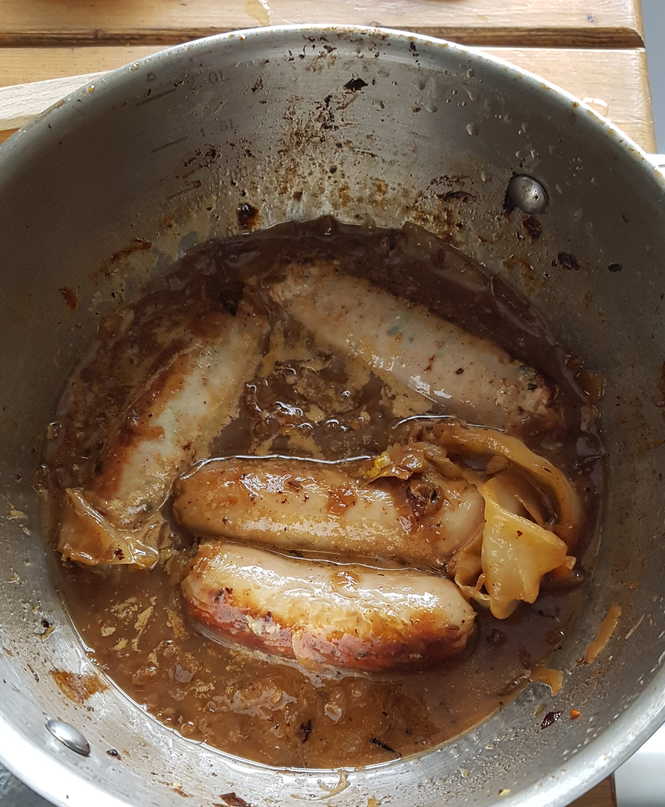
COVID Springs Eternal

Spring is sprung, the grass is riz
I wonder where the boidies is
They say the boid is on the wing
But that's absoid, the wing is on the boid!
Ah, daffodil buds are finally appearing alongside the garbage-strewn road that leads to my nephew's school. In a good year they get the chance to blossom into flowers before the local school kids kick all their heads off.
In the movie of my life George Winston will provide the soundtrack to this time of year.
Though Spike Milligan made a good stab at lampooning the rainy season with recitals of his lovely pome. Well, not his. Author Unknown, apparently.
Over Easter I took time off to visit my yacht up in Newcastle, chase away the nesting seagulls and scrape off their Christmas presents.
Naturally it snowed. Welcome to Global Warming!
I spent the first couple of days aboard wallowing in the joy of Pringles after my Lentern abstention, and then buckled down to some overdue maintenance before clearing all my worldly possession out of the boat in preparation for selling her. Sigh 😢 Some of my worldly drinkables ended up in my tummy too.
Unfortunately, it turns out that all my worldly possessions won't fit into a moderately sized camper van, so Kurt and I will have to make a return trip in a few weeks to finish the job off. Meanwhile he's staunchly putting up with a large pile of some of my worldly possessions in the middle of his cellar floor.
When not on release from the Covid lockdown,
chez Sourville we spend a lot of our time bickering over the cooking, shopping, and whether or not we should all sit and gawp at the tellybox while we eat dinner.
I prefer the stimulation of conversation. But then, given where I'm living maybe I should just settle for the tellybox?
On the subject of shopping - I was forced, forced to order some rather nice Forvm wine vinegars which I can highly recommend from Melbury and Appleton (which definitely doesn't sound like a made up posh food company), due to the unusable ghastly supermarket horrors my brother bought us.
When you're on a high-salad diet, the quality of your dressings become depressingly important. But these matured vinegars definitely help.
And so, I've been doing healthy things with melons, and I finally managed to make a decent roast out of a topside beef joint, after years of trying, though it was not to everyone's taste 😉
Lastly, George's school has moved on from pushing Rice Krispies to pimping out Corn Flakes. Forcing me to adapt accordingly. Fortunately they haven't yet cut off my bagel supply - which is currently just about my only source of carbohydrates.
Those pounds don't lose themselves!
On the subject of shopping - I was forced, forced to order some rather nice Forvm wine vinegars which I can highly recommend from Melbury and Appleton (which definitely doesn't sound like a made up posh food company), due to the unusable ghastly supermarket horrors my brother bought us.
When you're on a high-salad diet, the quality of your dressings become depressingly important. But these matured vinegars definitely help.
And so, I've been doing healthy things with melons, and I finally managed to make a decent roast out of a topside beef joint, after years of trying, though it was not to everyone's taste 😉
Lastly, George's school has moved on from pushing Rice Krispies to pimping out Corn Flakes. Forcing me to adapt accordingly. Fortunately they haven't yet cut off my bagel supply - which is currently just about my only source of carbohydrates.
Those pounds don't lose themselves!
Slow-Roast Chicken with Fondant Potatoes
main staple fowl
This seemed like a fortuitous combination which requires surprisingly little supervision, for the most part.
Though I'm sure it's not quite the best way of roasting chicken, it may be the easiest.
It's basically this chicken roasting process with added potatoes.
Though I'm sure it's not quite the best way of roasting chicken, it may be the easiest.
It's basically this chicken roasting process with added potatoes.
Serves a Family
Ingredients
- 1 chicken
- butter
- garlic
- herbs
- ½ lemon
- potatoes
- chicken stock
Preheat the oven to Gas Mark 1.
Peel potatoes that aren't too floury and liable to fall apart. Cut them in half (lengthways or crossways - you decide) slice the opposite side flatter, then run a peeler or a small knife around the flat parts, turning them into vaguely barrel shapes, to remove the sharp edges that might burn. Put them in a bowl of water while you heat up a baking dish just large enough to hold them, half-filled with (ideally) chicken stock and flavoured with a few herbs and garlic cloves.
Mash up some butter, crushed garlic, salt, pepper and any herbs you like. Using a dessertspoon shove the mixture between the chicken breast and skin. Season the chicken cavity, fill with herbs of any description you fancy, and close with half a lemon.
Slice up some onions and layer them in the bottom of an oven tin. Put in the chicken, breast down, season, and smear over a little more butter. Surround the chicken with a few peeled carrots (cut lengthwise or into chunks if you prefer), a tablespoonful of liquid, loosely cover with foil and put in the middle of the oven.
Put the potatoes into the baking dish so the stock almost covers them, add a generous amount of butter (at least a couple of tablespoons), cover the dish lightly with foil, and put them in the top of the oven.
Now leave them for 2 hours.
After 2 hours, turn the oven up to Gas Mark 6.
Turn the potatoes over in the stock, uncover and return to the top shelf of the oven.
Turn the chicken breast-side up, smear with a little more butter and add a little liquid if required. Return, uncovered, to the middle of the oven.
You'll need to check on them occasionally now, but the chicken should be done after about 45 minutes, at which point you can take it out to rest before carving. At this point turn the potatoes, which by now should be roasting in pure fat and let the other side crisp up. Carve the chicken, strain the juices from the roasting tin and serve together with the potatoes and carrots.
Peel potatoes that aren't too floury and liable to fall apart. Cut them in half (lengthways or crossways - you decide) slice the opposite side flatter, then run a peeler or a small knife around the flat parts, turning them into vaguely barrel shapes, to remove the sharp edges that might burn. Put them in a bowl of water while you heat up a baking dish just large enough to hold them, half-filled with (ideally) chicken stock and flavoured with a few herbs and garlic cloves.
Mash up some butter, crushed garlic, salt, pepper and any herbs you like. Using a dessertspoon shove the mixture between the chicken breast and skin. Season the chicken cavity, fill with herbs of any description you fancy, and close with half a lemon.
Slice up some onions and layer them in the bottom of an oven tin. Put in the chicken, breast down, season, and smear over a little more butter. Surround the chicken with a few peeled carrots (cut lengthwise or into chunks if you prefer), a tablespoonful of liquid, loosely cover with foil and put in the middle of the oven.
Put the potatoes into the baking dish so the stock almost covers them, add a generous amount of butter (at least a couple of tablespoons), cover the dish lightly with foil, and put them in the top of the oven.
Now leave them for 2 hours.
After 2 hours, turn the oven up to Gas Mark 6.
Turn the potatoes over in the stock, uncover and return to the top shelf of the oven.
Turn the chicken breast-side up, smear with a little more butter and add a little liquid if required. Return, uncovered, to the middle of the oven.
You'll need to check on them occasionally now, but the chicken should be done after about 45 minutes, at which point you can take it out to rest before carving. At this point turn the potatoes, which by now should be roasting in pure fat and let the other side crisp up. Carve the chicken, strain the juices from the roasting tin and serve together with the potatoes and carrots.
Cornflake Chicken
fowl main
Chicken covered with cornflakes and baked. Or are they corn flakes?
I followed Epicurious's transcription of the recipe. With added flour.
You could probably substitute Rice Krispies™ for the cornflakes.
The topping is crunchy. Though it also tastes distinctly of cornflakes.
I followed Epicurious's transcription of the recipe. With added flour.
You could probably substitute Rice Krispies™ for the cornflakes.
The topping is crunchy. Though it also tastes distinctly of cornflakes.
Serves 4
Ingredients
- a pound of chicken bits
- seasoned flour
- 1 egg
- a splash of milk
- a decent bowlful of cornflakes, crushed
Preheat the oven to Gas Mark 5-6/190-200°C.
Beat the egg with a splash of milk a couple of tablespoons will do in a bowl.
Put the cornflakes in a hole-free plastic bag and crush them up by running a rolling pin back and forth across the bag. They need to be reasonably fine, but not dust. Empty into a bowl.
Season a little flour in another bowl.
Thoroughly dry your chicken bits.
Bake for 30-40 minutes until cooked through.
Beat the egg with a splash of milk a couple of tablespoons will do in a bowl.
Put the cornflakes in a hole-free plastic bag and crush them up by running a rolling pin back and forth across the bag. They need to be reasonably fine, but not dust. Empty into a bowl.
Season a little flour in another bowl.
Thoroughly dry your chicken bits.
I used what my Local Fucking Supermarket™ calls chicken mini fillets.
Which are in fact just a collection of random skinned, boned, chicken bits.
I couldn't really get mine dry enough - hence the flour.
Roll each chicken bit in seasoned flour, shake off any excess, coat completely in the egg wash, shake of any excess, roll in the cornflakes to coat thoroughly,
then lay on a baking tray. Drizzle with oil or butter if you like.I couldn't really get mine dry enough - hence the flour.
Bake for 30-40 minutes until cooked through.
They're tasty enough, though a bit (ok, a lot) on the dry side. You'll need a dip or a sauce. Or a rich chicken gravy.
Serve with mash and some seriously good homemade coleslaw and pretend like you're at KFC.
Serve with mash and some seriously good homemade coleslaw and pretend like you're at KFC.
Seriously Good Homemade Coleslaw
salad veg
It's actually just a pretty run-of-the-mill coleslaw, but it does have the advantage of tasting pretty much like KFC's.
Well, as long as you don't add the celery seeds.
Perfect for budding little Philistines!
Perfect for budding little Philistines!
Serves 10
Ingredients
- 1 medium cabbage (about 2 pounds), outer leaves removed
- 3 medium carrots, peeled and shredded
- ½ cup loosely packed fresh parsley leaves, coarsely chopped
Dressing:- 1 cup (170 grams) mayonnaise
- 2 tablespoons apple cider vinegar or more to taste
- 2 tablespoons Dijon mustard or coarse ground mustard
- 1 teaspoon celery seeds
- ¼ teaspoon fine sea salt or more to taste
- ¼ teaspoon fresh ground black pepper or more to taste
- 1-2 teaspoons sugar optional
Quarter the cabbage through the core, and then cut out the core. Cut each quarter crosswise in half and finely shred.
Place the shredded cabbage in a very large bowl (you will have 6 to 8 cups).
Add the shredded carrot and parsley to the cabbage and toss to mix.
In a separate bowl, stir the mayonnaise, vinegar, mustard, celery seeds, salt, and pepper together. Taste for acidity and seasoning then adjust as desired. Add a little sugar too, if you like. Pour two-thirds of the dressing over the cabbage and carrot then mix well. (Clean hands are the quickest tool - as the actress said to the bishop!).
If the coleslaw seems dry, add a little more of the dressing. Eat right away or let it sit in the refrigerator for about an hour to let the flavors mingle and the cabbage to soften. The longer the cabbage sits in the coleslaw dressing, the softer and less crunchy it will become.
Add the shredded carrot and parsley to the cabbage and toss to mix.
In a separate bowl, stir the mayonnaise, vinegar, mustard, celery seeds, salt, and pepper together. Taste for acidity and seasoning then adjust as desired. Add a little sugar too, if you like. Pour two-thirds of the dressing over the cabbage and carrot then mix well. (Clean hands are the quickest tool - as the actress said to the bishop!).
If the coleslaw seems dry, add a little more of the dressing. Eat right away or let it sit in the refrigerator for about an hour to let the flavors mingle and the cabbage to soften. The longer the cabbage sits in the coleslaw dressing, the softer and less crunchy it will become.
If you left this in a giant bucket out in the hallway for a week, it would be indistinguishable from KFC's 😉
Slow Cooker Pork Chops in Tomato Sauce
main meat crockpot
Obviously you could add mushrooms, bacon, chorizo, etc. Even cream cheese!
Serves 6
Ingredients
- half a dozen pork chops
- olive oil for frying
- chilli flakes optional
- 1 onion, chopped
- 1 green pepper optional for pepper-averse Philistines, sliced
- tin chopped tomatoes
- 3-4 tablespoons tomato purée
- 1-2 tablespoons Worcestershire sauce
- concentrated chicken stock
- dried herbs Italian style - thyme, oregano, whatnot
- 4-6 garlic cloves, crushed
- salt & pepper
Sear the pork chops in small batches in a very hot frying pan with a little olive oil.
Add a pinch or two of dried chilli flakes, if you're in the mood.
Add the tomato purée and stir around the pan until any harsh aroma has cooked off and the oil begins to separate.
Thoroughly rinse out the pan with a little reduced stock and decant everything into the slow cooker.
Season, and cook on low for 8 hours or high for 4.
Serve over pasta with grated cheese.
Add the tomato purée and stir around the pan until any harsh aroma has cooked off and the oil begins to separate.
Thoroughly rinse out the pan with a little reduced stock and decant everything into the slow cooker.
Season, and cook on low for 8 hours or high for 4.
Serve over pasta with grated cheese.
The sauce is really tasty.
The chops, not so much. Tender yes, but rather dry I thought. You need to shred (or pull) them into the sauce to get any juice or flavour out of (into?) them.
The chops, not so much. Tender yes, but rather dry I thought. You need to shred (or pull) them into the sauce to get any juice or flavour out of (into?) them.
Sausage Braised with Brussels Sprouts and Caraway Seeds
main meat
You can make this with wedges of white cabbage instead of the sprouts.
In fact, it was just such a recipe which inspired me.
In fact, it was just such a recipe which inspired me.
Serves 3
Ingredients
- half a dozen pork sausages apple flavoured ones are nice
- oil, lard or dripping for frying
- butter for frying
- 1 onion, finely chopped
- a dozen brussels sprouts, trimmed, halved
- 1 teaspoon caraway seeds
- apple juice or cider
- chicken stock
- sour cream optional
Fry the sausages with a generous amount of fat over a moderate heat to brown them nicely. Set them aside.
Finely chop the onion and add to the pan and fry, gently, until starting to caramalize.
De-glaze the frying pan with apple juice or cider and chicken stock. Bubble to reduce about half, then add to the pot.
Stir the onion and sprouts and lay the sausages on top. Cover and put in a moderate Gas Mark 4 oven for 15-30 minutes or simmer for 15 minutes on the stove-top.
Stir through a couple of tablespoons of sour cream, if you like, and serve with some good German mustard and mashed potatoes.
You may want to discard the existing fat and start again with the onions, since those sausage juices do have a nasty tendency to burn.
Meanwhile heat a little oil and butter in an oven-proof pot if you plan on finishing this in the oven.
Press the sprouts into the pot, cut side down, and fry over high heat until they scorch a little.
Throw in the caraway seeds and the caramelized onions.De-glaze the frying pan with apple juice or cider and chicken stock. Bubble to reduce about half, then add to the pot.
Stir the onion and sprouts and lay the sausages on top. Cover and put in a moderate Gas Mark 4 oven for 15-30 minutes or simmer for 15 minutes on the stove-top.
Stir through a couple of tablespoons of sour cream, if you like, and serve with some good German mustard and mashed potatoes.
Rather tasty.
Excellent Roast Topside, Finally!
meat main
I've been fiddling around trying to reasonably roast topside and silverside joints by slower and slower cooking with more and more liquid
only to end up with increasingly stringy, dried-out, flavourless meat.
Sorry Flora!
And the solution was right there at Il Luogo di Aimo e Nadia in Milan all the time.
Just roast the joint at the highest temperature your oven will go until it's done.
Simples!
Well, of course, there's a bit of dry rubbing and resting and so on, but that's basically it. Despite the fact that the meat joint Fabio uses seems (as far as I can tell without actually speaking Italian) to be a piece of short loin, cut from the front or fattier end of the cow's back and including a section of tenderloin, his method produced my best topside joint yet with a lovely tasty crust and juicy succulent pink centre. You do have to slice it super-thinly to best experience it, and Philistines won't like the fact that it isn't brown and dry like the beef they're used to, doesn't taste like burned string vest or come apart like Shredded Wheat; but some sacrifices do have to be made for the Greater Steak.
Speaking of sacrifices, you'll struggle to prepare the usual accompaniments of roast potatoes or Yorkshire puddings in the blazing hot oven. You have half an hour while the meat rests to try and cook them, unless of course you live with the kind of Philistines who eat frozen roast potatoes (yup, they're a thing!) or frozen Yorkshires (also a thing), ready in mere minutes.
Simples!
Well, of course, there's a bit of dry rubbing and resting and so on, but that's basically it. Despite the fact that the meat joint Fabio uses seems (as far as I can tell without actually speaking Italian) to be a piece of short loin, cut from the front or fattier end of the cow's back and including a section of tenderloin, his method produced my best topside joint yet with a lovely tasty crust and juicy succulent pink centre. You do have to slice it super-thinly to best experience it, and Philistines won't like the fact that it isn't brown and dry like the beef they're used to, doesn't taste like burned string vest or come apart like Shredded Wheat; but some sacrifices do have to be made for the Greater Steak.
Speaking of sacrifices, you'll struggle to prepare the usual accompaniments of roast potatoes or Yorkshire puddings in the blazing hot oven. You have half an hour while the meat rests to try and cook them, unless of course you live with the kind of Philistines who eat frozen roast potatoes (yup, they're a thing!) or frozen Yorkshires (also a thing), ready in mere minutes.
Serves 4
Ingredients
- 1 kg topside beef joint
- 40g cane sugar
- 20g fine sea salt
- 2 teaspoons mustard powder
- a drizzle of olive oil
Bring the joint up to room temperature in good time for cooking. Tie loosely with butcher's twine to help it hold its shape while roasting.
Mix together 40% of the meat's weight in cane sugar and 20% in fine sea salt.
Contrary to Alssandro and Fabio's instructions I added a couple of teaspoons of English mustard powder. But then I am English.
Rub all over the joint, then set the joint on an oven rack to season for about 30 minutes.
You'll need to put it over a dish to catch the juices which will leak off as moisture is drawn from the meat.
Pre-heat the oven to 250°C/480°F/Gas Mark 9. Basically as hot as it will go.
Drizzle the joint with olive oil and place fat-side up on a rack over an oven tray. You should probably line the oven tray with foil for ease of cleaning.
My 1kg joint took exactly 45 minutes.
Set aside to rest for 30-35 minutes yes, really! turning occasionally to prevent the juices inside from all settling to one side. Though I very loosely covered mine with foil, the Italians recommend not doing so. However, they also seem not to mind cold meat.
Finally, cut away the string, slice the meat thinly and serve with your sauce of choice. Horseradish cream, mustard, salsa verde, chimichurri, gribiche, bearnaise sauce, or even gravy.
(Though you'll have to make the gravy separately - you won't get any gravy juices from this topside joint - they're all still inside. Or burned!)
Pre-heat the oven to 250°C/480°F/Gas Mark 9. Basically as hot as it will go.
Drizzle the joint with olive oil and place fat-side up on a rack over an oven tray. You should probably line the oven tray with foil for ease of cleaning.
I rather thought I might be able to use the juices caught in the tray to make up a gravy but all the drippings will just burn horribly.
And you don't want to add any liquid to the tray because that will interfere with the high-temperature roasting of the meat.
Put the joint in the centre or upper half of the oven and roast for something like 15 minutes, plus 15 minutes per pound.
Turn the joint occasionally and check the temperature towards the end. Remove from the oven when the centre reaches 48°C.My 1kg joint took exactly 45 minutes.
Set aside to rest for 30-35 minutes yes, really! turning occasionally to prevent the juices inside from all settling to one side. Though I very loosely covered mine with foil, the Italians recommend not doing so. However, they also seem not to mind cold meat.
Finally, cut away the string, slice the meat thinly and serve with your sauce of choice. Horseradish cream, mustard, salsa verde, chimichurri, gribiche, bearnaise sauce, or even gravy.
(Though you'll have to make the gravy separately - you won't get any gravy juices from this topside joint - they're all still inside. Or burned!)
Awesome!
Melon Mixed Salad
salad meat
Who knew that you could fuck up canning sweetcorn? Well, Morrisons supermarket does. Their own-label corn taste like unsweetened polystyrene.
So best avoided.
So best avoided.
Serves 4
Ingredients
- a couple of pickled beetroots, chopped
- ½ Galia melon, chopped
- 1 red onion, finely chopped
- bunch coriander, roughly chopped
- ⅔ tin sweetcorn Not Morrisons'!
- 150g ham, chopped
- 2 courgettes, chopped
- salad leaves
Dressing:- 2-3 anchovies, minced
- juice of 2 oranges
- juice of 1 lemon
- splash balsamic vinegar
- 100g grated parmesan
- 1-2 tablespoons mayonnaise
- glug olive oil
- dash Worcestershire sauce
- salt & pepper
- a little horseradish cream or perhaps mustard
Peel and deseed the melon, and the courgettes if you like.
Cut up the melon, beetroot, courgette and the ham into about 1cm cubes. Mix with the sweetcorn chopped red pepper and broccoli or cauliflower florets are also acceptable additions.
Mince or mash the anchovies and shake up with the citrus juice, vinegar and Worcestershire sauce.
Add as much finely grated parmesan as the mixture will reasonably absorb, then add a couple of tablespoons of mayonnaise and a glug of olive oil to thicken the mixture.
Spice it up with a little horseradish or mustard. If you like.
Serve the dressed salad over torn lettuce or rocket leaves.
Cut up the melon, beetroot, courgette and the ham into about 1cm cubes. Mix with the sweetcorn chopped red pepper and broccoli or cauliflower florets are also acceptable additions.
Mince or mash the anchovies and shake up with the citrus juice, vinegar and Worcestershire sauce.
Add as much finely grated parmesan as the mixture will reasonably absorb, then add a couple of tablespoons of mayonnaise and a glug of olive oil to thicken the mixture.
Spice it up with a little horseradish or mustard. If you like.
Serve the dressed salad over torn lettuce or rocket leaves.
Not too dusty. I was thinking of adding some feta cheese and black olives too. Maybe I should have?
Melon and Avocado Salad
salad veg
Not particularly original I suppose, but if you slice the melon and avocado similarly and rack them up next to each other they do look rather pretty 🙂
Serves 1 person per avocado
Ingredients
- firm orange/yellow melon, such as Galia, honeydew or a cantaloupe, sliced
- ripe avocado, sliced
- tomato
- coriander leaves, chopped
- bacon bits or ham - both optional
Dressings:- balsamic vinegar
- olive oil
Peel the melon and avocado and remove their seeds or stones.
Slice them both evenly into the same generous thickness.
Alternate the slices on serving plates, drizzle with olive oil and balsamic vinegar, scatter with chopped coriander leaves and bacon bits and serve with a decoratively cut tomato.
Alternate the slices on serving plates, drizzle with olive oil and balsamic vinegar, scatter with chopped coriander leaves and bacon bits and serve with a decoratively cut tomato.
Pretty and delicious!
Two and a Half Men

Welcome to 2021!
Honestly it's just like a sitcom here - two brothers doing their best to bring up a young boy in trying circumstances. I should write a book!
But It's going to be a slim month or two on the cooking front, now that I'm now doing my best to lose some winter OK, and the rest... pounds by indulging in my patented raw food diet. Plus crisps. Which are a kind of raw food too, right?
While it makes meal times a good deal less interesting, it does make them easier, since the Philistines are perfectly happy eating plain boiled vegetables and something from the freezer baked in the oven. Which leaves me more time for chopping lettuce.
On the subject of vegetable boiling, though more for my benefit than yours 🤟😝👆, here are my timings for the daily churn of producing vegetables not too crisp and not too soggy on my gas stove:
- Bring your pot of minimally watered vegetables to the boil:
- 5 minutes allowance for bringing the pot back to the boil over a low heat after adding boiling water.
- 20 minutes allowance for bringing the pot to the boil from cold on a low heat.
- Cook the veggies:
- 5-10 minutes simmering for soft or small diced vegetables (broccoli, cauliflower, sliced carrots...)
- 15 minutes simmering for chunked hardier or root vegetables (potatoes, turnip, swede...)
- 20 minutes simmering for cooking chunked veggies ready for mashing or roasting.
- 5 minutes allowance after cooking for draining, drying, greasing, mashing, etc.
- Finally, for long-cooked soft leafy vegetables like broccoli or sprouts (or carrots) not for Philistines: cook on a very low heat for 30 minutes from adding a little boiling water, as well as a pinch of sugar, bicarbonate of soda and some fat or oil.
Blue Cheese & Chicken Salad
salad fowl cheese
A sort of over-complicated caesar-y chicken salad.
Ingredients
- chicken, diced
- anchovies, minced
- sweet gem lettuce, sliced across fatly
- blue cheese, crumbled
- red pepper, diced
- cucumber, diced
- sweetcorn
- celery, diced possibly
- red onion, chopped
- avocado, cubed
- lemon juice or white wine vinegar
Dressing:- mayonnaise
- olive oil from the anchovies, preferably
- white wine vinegar
- parmesan unless that's cheesy overkill?
- soy sauce optional
- garlic maybe
First roast your chicken 😉
Halve the avocado, remove the stone, scoop the flesh from the skin with a spoon and cut into smallish cubes. Drizzle with a little lemon juice or white wine vinegar to slow down the browning process enough to be able to serve it still green.
Shred the chicken.
Mince the anchovies.
Cut the sweet gem lettuce leaves in half lengthways, then cut into fat slices.
Drain the sweetcorn.
Core, seed and dice the red pepper.
Cube the cucumber.
Chop the red onion.
Dice the celery small it would be the first thing I'd leave out.
Mix everything together then crumble over blue cheese.
Make up a dressing from mayonnaise, some of the anchovy olive oil (they used only the finest quality oil right?) and vinegar.
If you want to keep the dressing white for the aesthetics then you'll have to use white wine vinegar. But if you aren't so fussy a splash of soy sauce and balsamic vinegar goes down quite well.
You can add in some grated parmesan too, if you like. At least that's white.
Season with salt and, if you like, white pepper.
Halve the avocado, remove the stone, scoop the flesh from the skin with a spoon and cut into smallish cubes. Drizzle with a little lemon juice or white wine vinegar to slow down the browning process enough to be able to serve it still green.
Shred the chicken.
Mince the anchovies.
Cut the sweet gem lettuce leaves in half lengthways, then cut into fat slices.
Drain the sweetcorn.
Core, seed and dice the red pepper.
Cube the cucumber.
Chop the red onion.
Dice the celery small it would be the first thing I'd leave out.
Mix everything together then crumble over blue cheese.
Make up a dressing from mayonnaise, some of the anchovy olive oil (they used only the finest quality oil right?) and vinegar.
If you want to keep the dressing white for the aesthetics then you'll have to use white wine vinegar. But if you aren't so fussy a splash of soy sauce and balsamic vinegar goes down quite well.
You can add in some grated parmesan too, if you like. At least that's white.
Season with salt and, if you like, white pepper.
Rather good. You might crush some garlic into the dressing too.
Slow Cooked Chicken Casserole
fowl main crockpot
A chicken casserole done in the slow cooker. Pretty good if I say so myself ;)
Serves 8
Ingredients
- 1kg/8 chicken thighs, skinned, boned
- 6 slices bacon or 50g chorizo - if your brother hasn't used it all up
- 3 carrots
- 300g or a dozen or so brussels sprouts
- 3 potatoes
- 2 red onions
- 6 garlic cloves
- olive oil for frying
- 1 tbsp tomato purée
- 250ml chicken stock
- 1 tin baked beans
- 1 tin chopped tomatoes
- 1 tbsp or so soy sauce
- handful olives
- 1 tbsp capers
- 1 tbsp paprika
- 2 bay leaves
- a few sprigs thyme
- oregano
- pepper
- salt
Peel and chop the root vegetables into fat chunks.
Remove any damaged outer leaves from the sprouts and trim their stems.
Put them all in the slow cooker.
Feel free to add any chunked broccoli or cauliflower stalks you might have hanging around too (after trimming away any stringy parts). And some celery.
Roughly chop the onions (or cut them into segments). Heat olive oil in a large frying pan and fry the onion until they begin to colour around the edges then add to the slow cooker.
Chop the bacon or the chorizo into pieces or matchsticks. Peel the garlic and cut up any larger cloves. Fry the bacon and the garlic until the bacon is crisping and the garlic begins to colour.
Add everything to the slow cooker.
Cut up the chicken thighs if you like I didn't, but then mine were still partly frozen!. Coat with a little olive oil and dress with ground black pepper and some of the paprika and seasoned flour too - if you like. Add more oil to the frying pan if necessary and fry the chicken pieces until they are lightly browned all over.
Add to the slow cooker.
Add the tomato purée to the frying pan and cook a little then empty in the tinned tomatoes and simmer until thickened and reduced.
Add to the slow cooker.
Pour the stock into the frying pan and simmer until well reduced.
Add to the slow cooker.
Add the tin of beans, the olives, capers, bay leaves, the soy sauce, the rest of the paprika and any herbs you like fresh or dried thyme and oregano leaves. Season, and add more stock if necessary - though there should be barely any liquid in there.
Turn the slow cooker on low for 8-9 hours or high for 4 hours, with maybe a stir about half way through.
Serve with mash and, if you can figure out how to manage it in a slow cooker, dumplings.
Put them all in the slow cooker.
Feel free to add any chunked broccoli or cauliflower stalks you might have hanging around too (after trimming away any stringy parts). And some celery.
Roughly chop the onions (or cut them into segments). Heat olive oil in a large frying pan and fry the onion until they begin to colour around the edges then add to the slow cooker.
Chop the bacon or the chorizo into pieces or matchsticks. Peel the garlic and cut up any larger cloves. Fry the bacon and the garlic until the bacon is crisping and the garlic begins to colour.
Add everything to the slow cooker.
Cut up the chicken thighs if you like I didn't, but then mine were still partly frozen!. Coat with a little olive oil and dress with ground black pepper and some of the paprika and seasoned flour too - if you like. Add more oil to the frying pan if necessary and fry the chicken pieces until they are lightly browned all over.
Add to the slow cooker.
Add the tomato purée to the frying pan and cook a little then empty in the tinned tomatoes and simmer until thickened and reduced.
Add to the slow cooker.
Pour the stock into the frying pan and simmer until well reduced.
Add to the slow cooker.
Add the tin of beans, the olives, capers, bay leaves, the soy sauce, the rest of the paprika and any herbs you like fresh or dried thyme and oregano leaves. Season, and add more stock if necessary - though there should be barely any liquid in there.
Turn the slow cooker on low for 8-9 hours or high for 4 hours, with maybe a stir about half way through.
Serve with mash and, if you can figure out how to manage it in a slow cooker, dumplings.
Rather good.
You might want to fry a little flour added at the beginning or stir in a little cornflour at the end to thicken it up. Definitely don't add too much liquid.
You might want to fry a little flour added at the beginning or stir in a little cornflour at the end to thicken it up. Definitely don't add too much liquid.
Concerning dumplings; Contrary to everything you might assume from
every
single
instructional
on the inter-webs telling you they'll be ready in 30 minutes, trying to cook dumplings in your slow cooker will make you cry.
I had my dumplings (golf-ball-sized)
cooking, on top of the stew, on high, for 2 hours
and they still weren't cooked.
I even tried covering the pot with cling film to keep in the heat.
You might do better if you make them barely the size of marbles, but I doubt it.
You might do better if you make them barely the size of marbles, but I doubt it.
Furthermore, 3½ hours for smallish parsley dumplings is a bit too long - if it's possible to overcook dumplings, these were overcooked.
It would seem the sweet spot is somewhere between 2 and 3 hours.
Slow Cooked Beef Stew
main meat crockpot
Here's what I put in mine, but some celery wouldn't have gone amiss. And I'd have put in some bacon too, if I'd remembered.
Probably a splash or two of soy sauce would help deepen the flavour.
The pâté was something I needed to use up and this seemed a good way to do it. It definitely enriches the stew.
Probably a splash or two of soy sauce would help deepen the flavour.
The pâté was something I needed to use up and this seemed a good way to do it. It definitely enriches the stew.
Serves 4-6
Ingredients
- 750g beef, cubed
- seasoned flour
- 2" ginger, minced
- 2 onions, chopped
- 4 garlic cloves, chopped
- 2 tblsps tomato purée
- ½ swede, chunked
- 2 carrots, chunked
- 2 potatoes, chunked
- 100g Brussels pâté
- stock
- half a bottle of beer or lager
- 2 bay leaves
- 2 tblsps paprika
- 1-2 tsps dried thyme
- 1-2 tsps dried rosemary
- splash Worcestershire sauce
To Grind:- 1 tsp red peppercorns
- 1 tsp black peppercorns
- 1 tsp caraway seeds
- 1 tsp brown mustard seeds
- 10g dried porcini mushrooms
- salt
Garnish:- parsley, chopped
Heat a puddle of oil in a frying pan. Shake the beef cubes in a bag with the seasoned flour and fry quickly in batches over high heat, turning until they're nicely coloured.
Add to the slow cooker.
Fry the ginger over medium heat until it begins to caramelize, then add the onions and fry until they too begin to brown, then add the garlic and fry for a few more minutes. Stir through the tomato purée and cook until it loses its harsh flavour then tip everything into the slow cooker.
Clean the frying pan out with the beer, reducing it by about half, then add to the slow cooker. Mash the pâté into a little of the stock pressing it through a sieve if it remains persistently lumpy. Add to the slow cooker.
Trim away the outer leaves of the sprouts and roughly chunk the vegetables. No need to peel the potatoes or the carrots, if they're clean. Fill the slow cooker with them, throwing in a couple of bay leaves and the dried herbs. Pour in enough stock to barely cover and add a splash or two of Worcestershire sauce and maybe some soy sauce.
Grind up the spices and the dried mushrooms an electric grinder is ideal with a little sea salt.
Add the paprika and sprinkle over the stew.
Add to the slow cooker.
Fry the ginger over medium heat until it begins to caramelize, then add the onions and fry until they too begin to brown, then add the garlic and fry for a few more minutes. Stir through the tomato purée and cook until it loses its harsh flavour then tip everything into the slow cooker.
Clean the frying pan out with the beer, reducing it by about half, then add to the slow cooker. Mash the pâté into a little of the stock pressing it through a sieve if it remains persistently lumpy. Add to the slow cooker.
Trim away the outer leaves of the sprouts and roughly chunk the vegetables. No need to peel the potatoes or the carrots, if they're clean. Fill the slow cooker with them, throwing in a couple of bay leaves and the dried herbs. Pour in enough stock to barely cover and add a splash or two of Worcestershire sauce and maybe some soy sauce.
Grind up the spices and the dried mushrooms an electric grinder is ideal with a little sea salt.
Add the paprika and sprinkle over the stew.
Ground dried mushrooms are a great way of flavouring stews if you're cooking for fussy eaters who don't like the squeaky texture of whole mushrooms.
Plus a little goes a very long way.
Chop up the parsley and keep it for a garnish (though you can throw the chopped stalks into the stew too).
Not too dusty 😉
Fondant Potatoes
staple side
This time I took the opposite approach to fondanting my potatoes
- frying them in butter first, then finishing them off with stock in the oven.
I had a slow-cooking pork joint in at Gas Mark 3, so I sat the potatoes in the covered frying pan on the top shelf for an hour which seemed about perfect.
If you were cooking them on the stove-top it would probably only take half the time. I reckon they probably do taste better boiled first then finished in the butter, but this method was pretty low maintenance. You don't get that crunchy finish, but the potatoes are meltingly soft and well flavoured.
You can halve the potatoes lengthwise or crosswise, as I did here, to get two more equal flat sides. Take your pick.
I had a slow-cooking pork joint in at Gas Mark 3, so I sat the potatoes in the covered frying pan on the top shelf for an hour which seemed about perfect.
If you were cooking them on the stove-top it would probably only take half the time. I reckon they probably do taste better boiled first then finished in the butter, but this method was pretty low maintenance. You don't get that crunchy finish, but the potatoes are meltingly soft and well flavoured.
You can halve the potatoes lengthwise or crosswise, as I did here, to get two more equal flat sides. Take your pick.
Serves 4
Ingredients
- 4-6 potatoes
- 2-3 cloves garlic, slightly smashed
- 2 or 3 of sprigs of rosemary and thyme
- 5oz (150g) butter
- 3 fl oz (75ml) chicken stock
- sea salt & pepper
Peel the potatoes, halve them and pare the opposite sides down flat.
Carefully add the stock and season well.
Cover and simmer gently for about half an hour until the potatoes are tender. Or put them in a 160°C/325°C/Gas Mark 3 oven for an hour, or a 200°C/400°F/Gas Mark 6 oven for about half an hour.
Keep warm before serving.
If you soak them for half an hour you'll remove the excess starch and help with the browning. Dry them thoroughly afterwards.
Melt most the butter in a saucepan over a medium heat until it starts to foam.
Place the potatoes in the pan and cook for about 5-6 minutes until they're golden on the bottom.
Then turn them over, add the garlic and herbs and the rest of the butter and cook for the same time again.Carefully add the stock and season well.
Cover and simmer gently for about half an hour until the potatoes are tender. Or put them in a 160°C/325°C/Gas Mark 3 oven for an hour, or a 200°C/400°F/Gas Mark 6 oven for about half an hour.
Keep warm before serving.
Slow Cooker Beef Curry
curry meat main crockpot
This turned out to be an excellent training curry for a young Philistine, though the elder Philistine did complain it was not as spicy as the aroma had led him to believe.
I slightly enhanced Lulu Grimes slow cooker recipe by the addition of fruit. And, of course, more spices.
I slightly enhanced Lulu Grimes slow cooker recipe by the addition of fruit. And, of course, more spices.
Serves 4
Ingredients
- 750g beef for braising (braising steak, chuck, flank etc) cut into chunks
- seasoned flour for coating
- 4-6 small potatoes, halved or cut into fat chunks
- 3 tbsp oil
- 1 onion, chopped
- 4 garlic cloves, crushed
- 5cm piece ginger, grated or 1½ tsps ginger powder
- 4 cardamom pods
- 1 cinnamon stick
- couple bay leaves
- a pinch of crushed dried chillies
- 1-2 tsp smoked paprika
- 2 tsps ground coriander
- 1½ tsps ground cumin
- 1 tsp fenugreek powder
- 1 teaspoon garam masala
- 1 tsp ground turmeric
- ½-1 tsp chilli powder
- 400ml coconut milk
- tablespoon or two mango pickle
- 1 mango, peeled, chopped
To Serve:- small bunch coriander, chopped
Heat your slow cooker if you need to.
Mix the powdered spices with a little water to make a paste.
Cut the beef into chunks and halve the potatoes or cut them up into hefty chunks no need to peel them.
Crush the garlic, grate the ginger and roughly chop the onion.
Heat a couple of tablespoons of oil or ghee and add the cinnamon and cardamom pods. I forgot the cardamom pods. Didn't seem to do the curry any harm. Fry until they sizzle and release their fragrance. Add a pinch of crushed chillies to taste.
Coat the beef pieces generously in seasoned flour and fry in batches in the oil until browned all over and tip into the slow cooker with the raw potatoes.
Re-oil the frying pan and fry the onion over a low heat until it starts to soften. Add the garlic and ginger and fry for 1 minute.
Add the spice paste and fry for 1 minute or until the spices start to smell fragrant. Add the coconut milk and bring to a simmer, then tip everything into the slow cooker.
Cook for 4 hours on high or 8 hours on low. Peel the mango and cut into cubes. Add to the pot with 2 hours to go. You can throw in the stone too, from which you won't quite be able to cut away all the flesh. Don't try to eat it though 😉
When ready, dress with coriander and serve.
Mix the powdered spices with a little water to make a paste.
Cut the beef into chunks and halve the potatoes or cut them up into hefty chunks no need to peel them.
Crush the garlic, grate the ginger and roughly chop the onion.
Heat a couple of tablespoons of oil or ghee and add the cinnamon and cardamom pods. I forgot the cardamom pods. Didn't seem to do the curry any harm. Fry until they sizzle and release their fragrance. Add a pinch of crushed chillies to taste.
Coat the beef pieces generously in seasoned flour and fry in batches in the oil until browned all over and tip into the slow cooker with the raw potatoes.
Re-oil the frying pan and fry the onion over a low heat until it starts to soften. Add the garlic and ginger and fry for 1 minute.
Having no fresh ginger I added 1½ tsps ginger powder to the other spices.
Add the spice paste and fry for 1 minute or until the spices start to smell fragrant. Add the coconut milk and bring to a simmer, then tip everything into the slow cooker.
I used a very thick, high quality coconut milk, so I cleaned the frying pan out with stock, reduced it, and added that too.
Cook for 4 hours on high or 8 hours on low. Peel the mango and cut into cubes. Add to the pot with 2 hours to go. You can throw in the stone too, from which you won't quite be able to cut away all the flesh. Don't try to eat it though 😉
When ready, dress with coriander and serve.
Delicious!
Methi Matar Malai
Creamy Peas and Fenugreek Leaf Curry
Creamy Peas and Fenugreek Leaf Curry
veg curry side
I was going to attribute this to Srividhya's post,
but her website is so full of gibbering spam as to be unusable. So I won't.
I had no poppy seeds, no fresh ginger (for which I substituted ½ tsp ginger powder), no chillies (this was cooked for softies) and no fresh fenugreek, so I used dried.
You might need 50g/2 cups of fresh leaves. If you can find them.
I had no poppy seeds, no fresh ginger (for which I substituted ½ tsp ginger powder), no chillies (this was cooked for softies) and no fresh fenugreek, so I used dried.
You might need 50g/2 cups of fresh leaves. If you can find them.
Serves 4
Ingredients
To Soak:- a handful of cashews, chopped or broken
- 2 tsp poppy seeds
- ½ cup of water or milk or watery milk
To Cook:- oil for frying
- 4 cardamom
- 4 cloves
- stick cassia
- 1 onion, chopped
- 2 green chilies broken into two
- 2-3 cloves garlic, chopped
- ½ piece of ginger, grated or minced or ½ tsp ginger powder
- 1 tsp salt or to taste
- couple tablespoons dried fenugreek leaves or 50g/2 cups tightly packed fenugreek leaves.
- 1 cup frozen peas
- 3/4 cup water divided
- ⅓ cup heavy cream refer notes
To Garnish:- ½ tsp garam masala
- chopped coriander
- juice of ½ lemon
Strip the fenugreek leaves from their stems, rinse thoroughly and chop roughly.
Soak the poppy seeds if you have any and broken cashews in ½ cup of water/milk for 30 minutes.
Meanwhile heat a little oil in a frying pan fry the whole spices until they sizzle and release their aroma. Then add the onions and green chillies if using and fry for about 10 minutes until soft and light brown around the edges. Add the garlic and the fresh ginger and fry a little more until the oil separates and the harsh aroma is cooked off.
Allow to cool slightly then tip into a blender along with the soaked nuts.
Heat more oil or ghee in the frying pan and sauté the paste briefly until the oil separates and any harsh aroma has cooked off add the ginger powder now if using.
Add about ¼ cup water with some salt and cook, stirring regularly, for 5-10 minutes until the sauce thickens then add the fenugreek leaves fresh or dry and cook for another 5 minutes.
Add the peas as many as you like really and warm through gently.
Serve with a sprinkle of garam masala, some chopped coriander or a squeeze of lemon juice.
Soak the poppy seeds if you have any and broken cashews in ½ cup of water/milk for 30 minutes.
Meanwhile heat a little oil in a frying pan fry the whole spices until they sizzle and release their aroma. Then add the onions and green chillies if using and fry for about 10 minutes until soft and light brown around the edges. Add the garlic and the fresh ginger and fry a little more until the oil separates and the harsh aroma is cooked off.
Allow to cool slightly then tip into a blender along with the soaked nuts.
You can remove the whole spices if you like, or leave them in as long as you blend them all up very smoothly.
Heat more oil or ghee in the frying pan and sauté the paste briefly until the oil separates and any harsh aroma has cooked off add the ginger powder now if using.
Add about ¼ cup water with some salt and cook, stirring regularly, for 5-10 minutes until the sauce thickens then add the fenugreek leaves fresh or dry and cook for another 5 minutes.
Add the peas as many as you like really and warm through gently.
You can pre-warm frozen peas in a pot of boiling water, if you like.
If you want to use fresh peas you should probably cook them a little first to soften them up.
Finally, add the cream, stir and simmer on a low heat for a couple of minutes.Serve with a sprinkle of garam masala, some chopped coriander or a squeeze of lemon juice.
Really quite good, to say I had only half the necessary ingredients!
Add a little sugar if you find the fenugreek too bitter.
Add a little sugar if you find the fenugreek too bitter.
Kookoo
Persian Omelette
Persian Omelette
starter side veg main
A sort of Iranian omelette eaten hot or cold as a starter or a side dish, or a vegetarian main.
Went down like a Persian balloon P.b. Pb. Lead. Geddit? Oh well, please yourselves....
Suffice to say, no-one went cuckoo for Kookoo 🙁
Went down like a Persian balloon P.b. Pb. Lead. Geddit? Oh well, please yourselves....
Suffice to say, no-one went cuckoo for Kookoo 🙁
Serves 8
Ingredients
- 1 large cauliflower
- 2 medium onions
- Oil for frying
- 2 tsp turmeric
- 120g parsley
- 3 dessertspoons plain flour
- salt
- 1½ tsp baking powder
- 10 medium eggs
Accompaniment:- Pickles and fresh herbs
Wash the cauliflower and cook in salted water. Mash and leave to cool.
Chop the onions and fry in a little oil until soft and golden. Stir in the turmeric and put aside to cool.
Wash and chop the parsley you might consider coriander instead?. When all the ingredients are cool, mix the cauliflower, flour, baking powder, onions and parsley.
Heat enough oil to cover the base of a large frying pan. While the oil heats, beat the eggs until frothy, then stir in the cauliflower mixture. Pour into the hot oil, then immediately reduce the heat, cover and cook over a gentle heat for 25 minutes until firm.
Turn over and cook for a further 10 minutes. Serve immediately with mixed pickles and fresh herbs.
Chop the onions and fry in a little oil until soft and golden. Stir in the turmeric and put aside to cool.
Wash and chop the parsley you might consider coriander instead?. When all the ingredients are cool, mix the cauliflower, flour, baking powder, onions and parsley.
And salt. This really needs some salt!
Heat enough oil to cover the base of a large frying pan. While the oil heats, beat the eggs until frothy, then stir in the cauliflower mixture. Pour into the hot oil, then immediately reduce the heat, cover and cook over a gentle heat for 25 minutes until firm.
Turn over and cook for a further 10 minutes. Serve immediately with mixed pickles and fresh herbs.
I rather liked it - surprisingly fluffy and airy. I did add some mayonnaise and piccalilli juice too. Which might have helped to put off the Philistines.
Steak and Blue Cheese Pie
main meat cheese
Stilton, would be the traditional blue cheese of choice, though I used Cambazola - a mild blue cheese suitable for curdophobic Philistines.
It's best to start this pie a day or two ahead with a bag of well-fatted beef bones. Which you will boil up for a couple of hours with diverse herbs and alliums. You can then skim off the thick layer of dripping with which to make your pastry, and reduce the stock almost to demi-glaze to make the sauce. Yum!
My experience is that if you have a really good, well-reduced stock you shouldn't use too much (or any?) flour to coat the meat since the sauce may turn out unnecessarily gloopy. If you otherwise have only thin gruel, then gloopy is probably your best hope.
It's best to start this pie a day or two ahead with a bag of well-fatted beef bones. Which you will boil up for a couple of hours with diverse herbs and alliums. You can then skim off the thick layer of dripping with which to make your pastry, and reduce the stock almost to demi-glaze to make the sauce. Yum!
My experience is that if you have a really good, well-reduced stock you shouldn't use too much (or any?) flour to coat the meat since the sauce may turn out unnecessarily gloopy. If you otherwise have only thin gruel, then gloopy is probably your best hope.
Serves 6
Ingredients
For the Pastry:- 400g plain flour
- 2 tsps English mustard powder
- 200g dripping and butter
- ½ teaspoon salt
- 2 egg yolks
- ice water
For the Filling:- 1kg steak, cubed
- 2 tsps English mustard powder
- seasoned flour
- olive oil for frying
- 1½-2 red onions, chopped
- half a dozen cloves garlic, chopped
- 150g button mushrooms
- 100g blue cheese, crumbled or cubed, if it won't crumble
- strong beef stock
- 1 tblsp Worcestershire sauce
- 2 tblsps soy sauce
- handful thyme leaves
- couple of bay leaves
- ½ bottle pale ale you can drink the rest!
Make the Pastry
Cut the well-chilled fat into 1cm cubes. Dripping (or lard) is good for pastry crispness since it doesn't melt until cooked leaving a nice pastry honeycomb structure behind, but butter is good for flavour. So a mixture of the two is ideal. Add the mustard powder and salt into the flour then cut in the fat without overworking the mixture, or letting it get too warm. You don't need to rub away all the fatty chunks.
Cut in ice cold water until the mixture just clumps up. Roll into two flattened balls (one twice as large as the other), wrap in clingfilm and chill in the fridge for half an hour or so.
Set aside to cool.
Make the Filling
Cut the steak braising steak will do into 1" chunks and roll them in flour seasoned with salt and pepper and mixed with a few teaspoons of English mustard powder. Place a layer not too closely spaced in a hot frying pan with a generous amount of oil and leave to fry until they develop a nice bottom crust, then flip and caramelise the other side. Brown in batches, as necessary and set aside.
Add the chopped onion and more oil if required and fry gently until beginning to brown at the edges. Stir through chopped garlic and fry a little. Pour in a glass or two of pale ale and simmer until it bubbles and reduces a little, then add back the steak, cover with beef stock, add herbs, a dash or two of soy and Worcestershire sauce and simmer gently for a 2-3 hours or until the meat is tender. Or you can casserole it in the oven for a few hours. Meanwhile clean and fry the button mushrooms in butter until they take on a little colour. Add to the stew some half hour before it's ready. Reduce the sauce at the end until it is nice and thick. Now you can season it.
Leave to cool.
Fill the Pie
Fill the cooled pastry casing with the cooled filling. Crumble the blue cheese over the top.
Roll out the chilled ball of dough for the pie lid and cover the pie, crimping closed around the edges. Trim, decorate with left-over pastry pieces and make a couple of slits in the crust so it doesn't explode ;)
Chill thoroughly in the fridge or even freeze before cooking.
Preheat the oven to Gas Mark 4-5 and bake the chilled pie for 1-1½ hours until the crust is golden and the filling pie-ping hot (geddit?). Adjust temperatures accordingly in the process.
Cut the well-chilled fat into 1cm cubes. Dripping (or lard) is good for pastry crispness since it doesn't melt until cooked leaving a nice pastry honeycomb structure behind, but butter is good for flavour. So a mixture of the two is ideal. Add the mustard powder and salt into the flour then cut in the fat without overworking the mixture, or letting it get too warm. You don't need to rub away all the fatty chunks.
Cut in ice cold water until the mixture just clumps up. Roll into two flattened balls (one twice as large as the other), wrap in clingfilm and chill in the fridge for half an hour or so.
If you like, for added richness, you can mix an egg yolk or two into the water.
It's probably not really worth it for a strongly flavoured pied crust like this one though.
You can also add chopped herbs to the mixture.
Dust your chilled marble slab with flour and working quickly roll out the larger ball,
lift (rolled around your pin if necessary) and drop into your pie dish, gently pressing the pastry into the bottom.
Cover the pastry with foil, fill with baking beans or sugar and bake blind at Gas Mark 5-6 for about 15 minutes or until the pastry becomes firm around the edges,
then remove the beans and the foil and return to the oven on a lower shelf to finish off for 5-10 minutes until all the pastry is a light tan colour.
If you like you can paint the inside with beaten egg white to seal the surface.
Don't let the egg white pool though, or you'll end up with some unpleasantly rubbery sheets in the bottom.Set aside to cool.
Make the Filling
Cut the steak braising steak will do into 1" chunks and roll them in flour seasoned with salt and pepper and mixed with a few teaspoons of English mustard powder. Place a layer not too closely spaced in a hot frying pan with a generous amount of oil and leave to fry until they develop a nice bottom crust, then flip and caramelise the other side. Brown in batches, as necessary and set aside.
Add the chopped onion and more oil if required and fry gently until beginning to brown at the edges. Stir through chopped garlic and fry a little. Pour in a glass or two of pale ale and simmer until it bubbles and reduces a little, then add back the steak, cover with beef stock, add herbs, a dash or two of soy and Worcestershire sauce and simmer gently for a 2-3 hours or until the meat is tender. Or you can casserole it in the oven for a few hours. Meanwhile clean and fry the button mushrooms in butter until they take on a little colour. Add to the stew some half hour before it's ready. Reduce the sauce at the end until it is nice and thick. Now you can season it.
Leave to cool.
Fill the Pie
Fill the cooled pastry casing with the cooled filling. Crumble the blue cheese over the top.
Roll out the chilled ball of dough for the pie lid and cover the pie, crimping closed around the edges. Trim, decorate with left-over pastry pieces and make a couple of slits in the crust so it doesn't explode ;)
Chill thoroughly in the fridge or even freeze before cooking.
Preheat the oven to Gas Mark 4-5 and bake the chilled pie for 1-1½ hours until the crust is golden and the filling pie-ping hot (geddit?). Adjust temperatures accordingly in the process.
A most excellent pie!
Bubble and Squeak Cakes
Fried potato and cabbage
veg vegan staple side
Traditionally a useful way of frying up leftovers from the Sunday roast, and in the 18th Century, apparently featuring leftover meat rather than potato.
Ideally you would have about the same in volume or twice the weight of potato as cabbage, but the ratio is hardly important; add an egg if the mixture won't bind. Use shredded cabbage, brussels, spring onions or indeed any green vegetables or herbs. Even carrots (not my favourite). Possibly peas.
You could just fill the whole frying pan with the mixture, flip and fry the second side to make one giant potato pancake. But these smaller cakes are rather nice. And somewhat easier to manage.
Ideally you would have about the same in volume or twice the weight of potato as cabbage, but the ratio is hardly important; add an egg if the mixture won't bind. Use shredded cabbage, brussels, spring onions or indeed any green vegetables or herbs. Even carrots (not my favourite). Possibly peas.
You could just fill the whole frying pan with the mixture, flip and fry the second side to make one giant potato pancake. But these smaller cakes are rather nice. And somewhat easier to manage.
Ingredients
- potato, mashed
- cabbage or etc., shredded
- large knob of butter
- salt & pepper
- plain flour
- dripping, lard or olive oil for frying
First eat a roast Sunday dinner, leaving plenty of cabbage or brussels, and potato suitable for mashing.
(Yes, you can mash cold roast potatoes!)
Alternatively boil up some potatoes, let them steam dry you don't want this mixture to be watery
and mash them with plenty of butter. Season well.
Then blanch some cabbage without overcooking it, squeeze out the excess water (it's easier with brussels!) and shred.
Mix the mashed potato and the shredded vegetable together. Take handfuls, shape into flattened patties, roll in the flour to coat and shallow fry in a generous amount of lard (or whatever) in a very hot pan without fidgeting them until a nice brown crust develops on each side and the cakes become very soft - so turn them carefully.
Then blanch some cabbage without overcooking it, squeeze out the excess water (it's easier with brussels!) and shred.
Mix the mashed potato and the shredded vegetable together. Take handfuls, shape into flattened patties, roll in the flour to coat and shallow fry in a generous amount of lard (or whatever) in a very hot pan without fidgeting them until a nice brown crust develops on each side and the cakes become very soft - so turn them carefully.
Classic!
You can also turn them into handy potato bhajis to go with a curried meal.
Just add ginger/turmeric/chillie/cumin/coriander spices to the mixture.
And maybe a grating of creamed coconut!
And maybe a grating of creamed coconut!
A Merry Covidmas to all;
God Help Us, Every One!
God Help Us, Every One!

Well here we are, marching into another year of pointless idiot lockdowns behind our glorious leader Clown Minister Boris.
At least I can enjoy this blessed respite; since I don't live in London! And with Christmas and New Year's day falling on Fridays this year it means the whole week in between is one long glorious holiday - Hallelujah!
Now where are my bloody presents?
We cut back on our baking this year, since we never eat it all, and by popular demand only made a few quick 'n' crunchy biscuits, coffee kisses and of course the obligatory mince pies.
And then George ate them all before even New Year was out. 🙄
Here are this years tasting notes:
At least I can enjoy this blessed respite; since I don't live in London! And with Christmas and New Year's day falling on Fridays this year it means the whole week in between is one long glorious holiday - Hallelujah!
Now where are my bloody presents?
We cut back on our baking this year, since we never eat it all, and by popular demand only made a few quick 'n' crunchy biscuits, coffee kisses and of course the obligatory mince pies.
And then George ate them all before even New Year was out. 🙄
Here are this years tasting notes:
- This year's goose was strangely long and thin, to the point it required me to scaffold the legs with string in order to fit it in the oven.
- Despite it's odd shape the goose took 6½ hours to cook rather than the anticipated 5 - so we had to wait 7½ hours before we could eat.
Which might have been because some idiot accidentally turned the oven up from Gas Mark 3 to 6 for an unknown period sorry Kurt!
and so it had to be turned back down to 2 to finish, in case of burning.
Thank God someone once got a meat thermometer for Christmas so it was, finally, just right! - As is now our custom we took the goose out of the oven to rest for an hour while the potates and parsnips roasted at Gas Mark 6.
They were just right. - We scooped the PERFECT Christmas stuffing out of the bird into a dish
and also put that back in the oven for an hour to cook through and develop a delicious crust.
It was just right. - We gave the bread sauce two hours to cook in a Gas Mark 3-4 oven.
It was just right. - The rest of the vegetables (the halved new potatoes, the massive quantity of halved sprouts, the sliced carrots)
we kicked off in our electric steamer 45 minutes before serving.
Yes, we have an electric steamer.
They were just right. - I made a litre of PERFECT Christmas gravy
using my usual PERFECT Christmas stock and 4 tablespoons of flour
fried in fat from Christmas Eve's roast pork joint.
Though the strangely long and thin goose yielded enormous volumes of fat but contributed next to no juices, the gravy was just right. - We warmed our traditional festive tin of peas in a pan on the stovetop. Well, what else would you do with tinned peas?
They were just fine.
Happy 2021 Everyone!
Prawn Cocktail
starter fish
This Christmas I was persuaded to settle for a depressingly mundane starter since, as Kurt rightly observed; "there's no-one here for you to impress this year".
Prawn cocktail was the the default option since it's sufficiently lowbrow to appeal to my brother, and George likes both prawns and tomato ketchup,
so there'd be no reason for him not to like it.
George didn't like it.
I mostly followed Lesley Orson's instructions for making the Marie Rose sauce, with an added festive splash of brandy.
And perhaps a dash of Worcestershire sauce - or was that only in the Bloody Marys? I forget.
I've had some truly dreadful bags of manky cooked or frozen prawns from our Local Fucking Supermarket™ before, so I insisted on buying fresh ones in the hope that it would guarantee a minimal level of quality. And the shelled raw king prawns we got really weren't too bad. I picked through them carefully and de-veined the larger ones.
If you buy them with their shells on, then you can cook them in their jackets and peel them after. They'll probably be more tasty that way.
George didn't like it.
I mostly followed Lesley Orson's instructions for making the Marie Rose sauce, with an added festive splash of brandy.
And perhaps a dash of Worcestershire sauce - or was that only in the Bloody Marys? I forget.
I've had some truly dreadful bags of manky cooked or frozen prawns from our Local Fucking Supermarket™ before, so I insisted on buying fresh ones in the hope that it would guarantee a minimal level of quality. And the shelled raw king prawns we got really weren't too bad. I picked through them carefully and de-veined the larger ones.
If you buy them with their shells on, then you can cook them in their jackets and peel them after. They'll probably be more tasty that way.
Serves 4
Ingredients
- 300g shelled fresh prawns
- a squeeze of lemon juice
- a little gem lettuce, mostly shredded
- half a dozen spoonfuls of mayonnaise
- two or three spoonfuls of double cream
- a squeeze of good quality tomato purée or possibly, ketchup
- a splash of brandy
- a squirt of Tabasco sauce
- a dash of Worcestershire sauce optional
To Garnish:- smoked paprika
Bring a pot of water or stock! to the boil, add the prawns, return to the boil and poach the prawns for 3 minutes.
Drain then dump into ice water to chill. Drain and dry them off, drizzle them with lemon juice and keep in the fridge until required.
Shred most of the lettuce and fill the bottom of the serving glasses. You can line the sides with a couple of trimmed whole leaves, if you like. Whisk up the sauce ingredients, adding any spare lemon juice. Season and adjust quantities. Mix in most of the prawns and fill the rest of the serving glasses. Pile the remaining prawns on top, garnish with a sprinkle of smoked paprika, and serve.
Shred most of the lettuce and fill the bottom of the serving glasses. You can line the sides with a couple of trimmed whole leaves, if you like. Whisk up the sauce ingredients, adding any spare lemon juice. Season and adjust quantities. Mix in most of the prawns and fill the rest of the serving glasses. Pile the remaining prawns on top, garnish with a sprinkle of smoked paprika, and serve.
Mundane.
But delicious 😉
But delicious 😉
Frangipane Mince Pies
veg sweet
On a rare (in this Time of COVID) day out with buddy Becky in Bradford,
she bought herself a mince pie to eat with the takeaway coffees we drank sitting on the pavement like fucking tramps.
And as she munched through it I found myself pondering how its glazed pastry reminded me of bakewell tarts,
and if it wouldn't be possible to top a mince pie with that kind of almond sponge for a different take on the traditional mince pie theme.
Naturally, when I found the time to google it, Mary Berry (amongst others) had been there before me. She even has (largely incoherent) instructions for optimally utilising your AARGHA. What, you don't have an AARGHA? What sort of Mary Berry fan are you?
So I've just copied out her recipe for you - though I have a couple of comments to make:
Naturally, when I found the time to google it, Mary Berry (amongst others) had been there before me. She even has (largely incoherent) instructions for optimally utilising your AARGHA. What, you don't have an AARGHA? What sort of Mary Berry fan are you?
So I've just copied out her recipe for you - though I have a couple of comments to make:
- 1 teaspoon of mincemeat per pie is simply not enough - it vanishes completely into the frangipane even though I was generous with mine.
Say, three teaspoons.
Big ones. - I managed to roll out 12 mince pies (using a deep yorkshire pudding tray), which left me with a little extra pastry.
But I then had to over-stuff the pies to use up all the topping, and that was with too little mincemeat content.
So if you make them with the proper balance you'll probably need less topping than Mary does. Unless she rolls out her pastry much thinner than I did.
Hmmm 🤔 yes, that might be it! - (But unless you have Mary Berry skills, don't roll your pastry out much thinner than I did. It will end up too thin and overworked to support the pies!)
- If you're lucky the idiot you sent shopping will actually turn up with the ingredients you asked for and you'll be able to top the pies with flaked almonds 🙄
If not, a sprinkle of icing sugar will help to decorate them.
Makes 18 Pies (or 12!)
Ingredients
For the Pastry:- 175g (6 oz) plain flour
- 75g (3 oz) butter, cut into cubes and chilled
- 25g (1 oz) icing sugar
- 1 egg, beaten
For the Frangipane:- 100g (4 oz) butter, softened
- 100g (4 oz) caster sugar
- 2 large eggs
- 100g (4 oz) ground almonds
- 1 level tablespoon plain flour
- ½ teaspoon almond extract,
For the Filling and Topping:- just under 1 x 410g (14 oz) jar mincemeat
- flavoured with about:
- 2 tablespoons brandy
- a few flaked almonds
- apricot jam to glaze
- lemon juice
Preheat the oven to 200°C/Fan 180°C/Gas 6.
To make the pastry, measure the flour, butter and icing sugar into a food processor bowl, then process until the mixture resembles breadcrumbs. Or cut the mixture together with a knife - don't overwork it. Pour in the beaten egg and pulse the blade until the dough starts to form a ball. You might need a little extra milk if the mixture doesn't cohere. Knead lightly, wrap and chill for about 30 minutes if the pastry is not quite firm enough to roll out.
To make the frangipane, measure the butter and sugar into the unwashed processor, and blend until soft and creamy. If you don't have a Magimix which matches your AARGHA you can just use a wooden spoon. Scrape down the sides, add the eggs and continue to process. Don’t worry if the mixture looks curdled at this stage. Add the ground almonds, flour and almond extract, and mix briefly.
Roll the pastry out thinly on a lightly floured work surface and cut into eighteen 6.5cm (2. in) circles. Use to line the tins. Spoon a teaspoon or three! of mincemeat into each tartlet and top with the frangipane mixture. There is no need to spread the mixture flat as it will level out in the oven (but do not overfill the tins). Sprinkle a few flaked almonds on top.
Bake in the preheated oven for 15–17 minutes, watching carefully. They're ready when the frangipane is just set in the centre and the edges begin to colour. Remove from the tins and allow to cool a little on a wire rack.
Dilute the apricot jam with a little lemon juice or water and bring to the boil. Brush each warm tartlet with glaze. Like traditional mince pies, these are best served warm.
To Prepare Ahead:
Build and bake as above, cool on the wire tray and either:
To make the pastry, measure the flour, butter and icing sugar into a food processor bowl, then process until the mixture resembles breadcrumbs. Or cut the mixture together with a knife - don't overwork it. Pour in the beaten egg and pulse the blade until the dough starts to form a ball. You might need a little extra milk if the mixture doesn't cohere. Knead lightly, wrap and chill for about 30 minutes if the pastry is not quite firm enough to roll out.
To make the frangipane, measure the butter and sugar into the unwashed processor, and blend until soft and creamy. If you don't have a Magimix which matches your AARGHA you can just use a wooden spoon. Scrape down the sides, add the eggs and continue to process. Don’t worry if the mixture looks curdled at this stage. Add the ground almonds, flour and almond extract, and mix briefly.
Roll the pastry out thinly on a lightly floured work surface and cut into eighteen 6.5cm (2. in) circles. Use to line the tins. Spoon a teaspoon or three! of mincemeat into each tartlet and top with the frangipane mixture. There is no need to spread the mixture flat as it will level out in the oven (but do not overfill the tins). Sprinkle a few flaked almonds on top.
Bake in the preheated oven for 15–17 minutes, watching carefully. They're ready when the frangipane is just set in the centre and the edges begin to colour. Remove from the tins and allow to cool a little on a wire rack.
Mary Berry's incoherent instructions for AARGHA owners:
Bake on the floor of the Roasting Oven for about 8 minutes to brown the pastry base. Turn round and slide on the grid shelf on the floor of the Roasting Oven for a further 6–8 minutes until well risen and golden brown. Put the cold plain shelf on the second set of runners if getting too brown.
Bake on the floor of the Roasting Oven for about 8 minutes to brown the pastry base. Turn round and slide on the grid shelf on the floor of the Roasting Oven for a further 6–8 minutes until well risen and golden brown. Put the cold plain shelf on the second set of runners if getting too brown.
Dilute the apricot jam with a little lemon juice or water and bring to the boil. Brush each warm tartlet with glaze. Like traditional mince pies, these are best served warm.
To Prepare Ahead:
Build and bake as above, cool on the wire tray and either:
- keep them for up to 3 days then refresh in a moderate oven at 180°C/Fan 160oC/Gas 4 for 8–10 minutes, and glaze.
- or freeze the pies, then thaw at room temperature for 2–3 hours. Warm through in the oven as above, then glaze.
Delicious - I think I'll make them again. Though with more mincemeat. And maybe some flaked almonds.
A Hallowe'en Hoosegow

Or how to celebrate your Birthday in the Covid Brig. Like that guy on the left.
Well we've now suffered er, enjoyed two birthdays during the most recent Covid restrictions so I know whereof I speak, And the answer seems to involve plenty of cooking.
And a Rice Krispie® birthday cake.
Oh, and drink. Don't forget the drink. You'll need lots of that too.
To bring you all up to speed: Since moving down to Bradford in July I've settled firmly into my new role as the resident uncle. One of my charges (the girl) managed to escape but we're keeping a firm hold on the other one.
Life has established a more regular grind now that I've finally begun that job with Lucifer's Own Services - yep, the one they first offered me in March: On the very day the lockdown(s) started!
Well they eventually got me going working from home. So my day now consists of the following punishing schedule:
Luxury!
So my recent cookery has been constrained not only by the available time, but also by the available audience. To whit, two Philistines.
One a ten-year-old, and the other with the palate of a ten-year-old.
Both utterly terrified of anything new or unexpected on their plates.
I treated the family to Mother's (watery) fish slop er, pie together with some pretty good brussels cooked with chorizo. My brother opined that he didn't believe fish and chorizo went together - seemingly unaware of the vast collection of popular fish and chorizo dishes, never mind the many excellent examples on this very website!
See that extensive list of acceptable foods? That's not just for the kids 😢
Well we've now suffered er, enjoyed two birthdays during the most recent Covid restrictions so I know whereof I speak, And the answer seems to involve plenty of cooking.
And a Rice Krispie® birthday cake.
Oh, and drink. Don't forget the drink. You'll need lots of that too.
To bring you all up to speed: Since moving down to Bradford in July I've settled firmly into my new role as the resident uncle. One of my charges (the girl) managed to escape but we're keeping a firm hold on the other one.
Life has established a more regular grind now that I've finally begun that job with Lucifer's Own Services - yep, the one they first offered me in March: On the very day the lockdown(s) started!
Well they eventually got me going working from home. So my day now consists of the following punishing schedule:
- 0700-0930: Get George clothed, fed and safely delivered to school.
- 0930-1430: Work.
- 1430-1600: Collect George from school.
- 1600-1700: Work.
- 1700-1900: Cook and eat dinner with George and Kurt.
- 1900-2000: Work.
- 2000-2100: See Kurt off to his job. Prepare George his evening fruit (which is a thing in our house) and clear the kitchen.
- 2100-2200: Work.
- 2200-2400: Prepare tomorrow's dinner.
- 0000-0700: My time is all my own!
Luxury!
So my recent cookery has been constrained not only by the available time, but also by the available audience. To whit, two Philistines.
One a ten-year-old, and the other with the palate of a ten-year-old.
Both utterly terrified of anything new or unexpected on their plates.
I treated the family to Mother's (watery) fish slop er, pie together with some pretty good brussels cooked with chorizo. My brother opined that he didn't believe fish and chorizo went together - seemingly unaware of the vast collection of popular fish and chorizo dishes, never mind the many excellent examples on this very website!
See that extensive list of acceptable foods? That's not just for the kids 😢
Rice Krispie Treats
sweet
Rice Krispie treats (or squares) are a great way to use up spare Rice Krispies®
if you happen to be drowning in them because your brother's son's school keeps sending boxes of them home for free
in the mistaken belief that their pupils do not get fed in the morning.
Or that if they weren't a simple box of cereal would resolve the problem.
A giant Rice Krispie Treat also makes a handy birthday cake for eager young helpers to make.
The convenient ratios below are actually American measures, but they're basically close enough to imperial sizes not to worry about converting - I didn't! 6 U.S. cups are about 5 Imperial cups, if you want to fuss.
A giant Rice Krispie Treat also makes a handy birthday cake for eager young helpers to make.
The convenient ratios below are actually American measures, but they're basically close enough to imperial sizes not to worry about converting - I didn't! 6 U.S. cups are about 5 Imperial cups, if you want to fuss.
Makes about a dozen squares
Ingredients
- 6 cups Rice Krispies® 180g/6oz
- 6 cups marshmallows 300g/10oz
- 6 tablespoons butter about 85g/3oz
- ½ tsp vanilla essence
- pinch of salt
Line a biscuit or a cake tin with lightly oiled baking parchment
honestly you won't need the paper unless you want to lift the thing out whole
- the mixture won't stick well to a lightly oiled ceramic or non-stick dish.
You can fill the tin first with Krispies to gauge the recipe quantities you'll need.
Gently melt the butter in a large pan, add the marshmallows and stir until they all melt together. Make sure the marshmallows are completely melted and blended in, but don't overcook them.
Stir in a pinch of salt and the vanilla essence, then the Rice Krispies. Mix thoroughly so all the Krispies are coated.
Scoop out the sticky mixture and lightly press into the cake tin using a lightly oiled spatula or gloves then gently smooth off the top (if you over-compress it the Krispie will set too hard).
Allow to cool for at least an hour then cut into squares.
Keep them in a sealed container if storing them for more than a few hours.
Gently melt the butter in a large pan, add the marshmallows and stir until they all melt together. Make sure the marshmallows are completely melted and blended in, but don't overcook them.
Stir in a pinch of salt and the vanilla essence, then the Rice Krispies. Mix thoroughly so all the Krispies are coated.
Scoop out the sticky mixture and lightly press into the cake tin using a lightly oiled spatula or gloves then gently smooth off the top (if you over-compress it the Krispie will set too hard).
Allow to cool for at least an hour then cut into squares.
Keep them in a sealed container if storing them for more than a few hours.
Surprisingly scrummy.
You can melt chocolate over the top of the squares, and I've also heard that you can replace the marshmallows above with Mars Bars.
I can already feel the pain in my teeth :)
You can melt chocolate over the top of the squares, and I've also heard that you can replace the marshmallows above with Mars Bars.
I can already feel the pain in my teeth :)
Along Came A Spider

I'm not quite sure if my life has suddenly become simpler, or more complicated. Definitely more complicated - Ed.
On the one hand I've finally moved out of my boat. Hurrah!
On the other hand I've moved in with my brother to help look after his two traumatised children who have had to be rehomed following family difficulties.
I've been given a list of acceptable dishes for the children, who simply refuse to eat anything icky, yucky, lumpy or unfamiliar. Hmm, déjà vu? Life's a circle I recall!
- beef: a roast joint
- pork: chops or a roast
- lamb: chops or a roast
- chicken: breaded, nuggets or a roast. Possibly tandoori. Or tikka. Oooh, the excitement!
- fish: breaded, battered or fingered
- potatoes: mashed, chipped, roasted or hash browned.
- carrots/broccoli/sprouts/cauliflower/peas: boiled. Just. Plain. Boiled.
- sausages: fried, roast or in a pie with beans
- pasta with red Dolmio sauce
- tuna casserole. Without the cheese.
- toad in the hole
- steak and kidney pudding. Without the kidney.
Reindeer Meat and Horseradish Vol au Vents, with Green Beans and Mashed Potato
meat main snack
At Christmas Flora gifted me a horseradish root, for our bloody marys, and a packet of dried reindeer meat from her visit to Norway. A sort of reindeer jerky, if you like.
It's sliced very thinly, almost like a prosciutto and packs quite a lot of flavour, if a little on the salty side.
I decided to use them both up in making a vol au vent filling. Together with some of the remaining Christmas Stock (it'll be fine - it's only late February yeah, OK - I'm a bit late writing this up).
Just because I'm using up leftovers doesn't mean it can't be presented with style. Hence the green bean parcels and the shaped mashed potato. But you could serve just the vol au vents as a canapé instead, if you liked.
I decided to use them both up in making a vol au vent filling. Together with some of the remaining Christmas Stock (it'll be fine - it's only late February yeah, OK - I'm a bit late writing this up).
Just because I'm using up leftovers doesn't mean it can't be presented with style. Hence the green bean parcels and the shaped mashed potato. But you could serve just the vol au vents as a canapé instead, if you liked.
Serves 3-4
Ingredients
For the Vol au Vents:- 400g puff pastry
- ½ egg yolk
For the Filling:- 80g thinly sliced dried reindeer meat
- rich stock, chicken or beef or reindeer!
- creamed horseradish sauce
- 2 tbsp flour
- 2 tbsp butter
- ½ cup milk
- ½ cup double cream
- 1-2 pickled gherkins
- a handful of parsley leaves, chopped
- 1½ egg yolks
For the Mash:- about 2lb/800g potatoes
- 2 oz/60g butter
- salt & white pepper
For the Beans:- 200g green beans
- 4-6 anchovies
- 1-2 cloves garlic
- olive oil
- zest and juice of 1 lime
- parsley stalks
- a handful of parsley leaves, sliced
Make the Horseradish Cream
Make up a strong horseradish sauce with 6" grated horseradish, 250ml sour cream and the juice of a lemon, then leave to mature for a day or two. Push the sauce through a sieve to remove the horseradish bits and create a smooth sauce.
For the Vol au Vents
Lightly beat two egg yolks with a little water.
Prepare the vol au vents: Roll the puff pastry to about 4-5mm thick. Using a 8-10 cm fluted pastry cutter cut out twice as many rounds as final vol au vents. You should be able to get around 16 rounds for 8 casings from the pastry.
Cut the centre out of half of the rounds using a smaller 5-6 cm fluted pastry cutter. Make a light cut into the centre of the whole rounds with the same cutter but don't cut all the way through - this will help them rise.
Brush the top of the whole rounds with egg wash and lay the cut-out rings on top, then brush both tops again. Avoid getting egg wash on the sides as it will inhibit their rising. If you like you can also make shallow, angled cuts along the outside edges of the rings with a small knife to aerate the dough and help it puff.
Chill for 15 minutes or as long as you can arrange. This will help to prevent shrinking during baking.
Heat the oven to 180-200°C/350-400°F/Gas 4-6. Line a baking sheet with greaseproof paper and lay on the chilled pastry cases. Brush the tops (and only the tops) a final time with egg wash. Bake for 10-20 minutes until they have risen and are golden on top.
Remove from the oven, allow to cool slightly and then cut the centre of the cases away with a knife and keep for later as a cap. Dig out any excess pastry from the cavity to make room for the filling. You can return the cases to the oven for an additional 4-5 minutes to dry out slightly if they need it.
For the Filling
Shred the thinly sliced dried reindeer meat, and simmer, lidded, with just enough stock to cover reindeer stock if you have it :) for about 15 minutes until it softens. Uncover and reduce until there is no excess liquid.
Slice up one or two small gherkins, then cut across the rounds to make short matchsticks. Set aside.
Cook a couple of tablespoons each of flour and butter in a small saucepan without browning until the mixture smells like pastry, then gradually add ½ a cup of milk, whisking until it thickens. Add ½ a cup of cream, whisk and heat through until it thickens. Add the softened reindeer meat and stock, and as much chopped gherkin as tastes well. Add milk or cream to adjust the consistency to that of thick custard. Add the chopped parsley.
Remove from the heat.
Blend the egg wash left over from glazing the pastries (there should be more than one yolk worth) with ½ cup of the strained horseradish sauce. Stir into the filling mixture. Taste and adjust the proportions and seasoning as necessary. If your reindeer meat is as salty as mine you won't need to add any extra salt. Fill the vol au vents with the sauce, put the little caps back on and serve still warm.
For the Mashed Potatoes
Peel the potatoes, cut into large even chunks (or not, depending on size) and simmer for 15-20 minutes until easily penetrated with a knife. You can use the same pan of boiling water to blanch your green beans too. Just dunk the sieve into it. Push the potatoes through a sieve or a potato ricer, mix with a generous lump of butter and season.
Use one of the earlier pastry cutters to shape the potato on each plate; fill the cutter, smooth the top, lift off the cutter.
For the Beans
Top and tail the green beans and cut into manageable lengths. Strip the parsley leaves from their stalks and chop them.
Blanche the beans and the parsley stalks; dunking them in a sieve into boiling water, then removing and draining them when the water returns to the boil.
Mince or press one or two garlic cloves. Chop up about a half-dozen anchovies (depending on size). Heat a little olive oil in a small pan and add the garlic and anchovies, sweat without browning until they melt down. Add the lime zest, then the par-boiled green beans, the reserved chopped parsley and lime juice.
Cover, shake, and heat through.
Make a loop of each softened parsley stalk by winding the ends around each other, then stuff the loop with green beans until it holds together.
Stand a green bean bundle on each plate and dress with pan juices.
Place two or three vol au vents on each plate and serve.
Make up a strong horseradish sauce with 6" grated horseradish, 250ml sour cream and the juice of a lemon, then leave to mature for a day or two. Push the sauce through a sieve to remove the horseradish bits and create a smooth sauce.
For the Vol au Vents
Lightly beat two egg yolks with a little water.
Prepare the vol au vents: Roll the puff pastry to about 4-5mm thick. Using a 8-10 cm fluted pastry cutter cut out twice as many rounds as final vol au vents. You should be able to get around 16 rounds for 8 casings from the pastry.
Cut the centre out of half of the rounds using a smaller 5-6 cm fluted pastry cutter. Make a light cut into the centre of the whole rounds with the same cutter but don't cut all the way through - this will help them rise.
Brush the top of the whole rounds with egg wash and lay the cut-out rings on top, then brush both tops again. Avoid getting egg wash on the sides as it will inhibit their rising. If you like you can also make shallow, angled cuts along the outside edges of the rings with a small knife to aerate the dough and help it puff.
Chill for 15 minutes or as long as you can arrange. This will help to prevent shrinking during baking.
Heat the oven to 180-200°C/350-400°F/Gas 4-6. Line a baking sheet with greaseproof paper and lay on the chilled pastry cases. Brush the tops (and only the tops) a final time with egg wash. Bake for 10-20 minutes until they have risen and are golden on top.
Remove from the oven, allow to cool slightly and then cut the centre of the cases away with a knife and keep for later as a cap. Dig out any excess pastry from the cavity to make room for the filling. You can return the cases to the oven for an additional 4-5 minutes to dry out slightly if they need it.
For the Filling
Shred the thinly sliced dried reindeer meat, and simmer, lidded, with just enough stock to cover reindeer stock if you have it :) for about 15 minutes until it softens. Uncover and reduce until there is no excess liquid.
Slice up one or two small gherkins, then cut across the rounds to make short matchsticks. Set aside.
Cook a couple of tablespoons each of flour and butter in a small saucepan without browning until the mixture smells like pastry, then gradually add ½ a cup of milk, whisking until it thickens. Add ½ a cup of cream, whisk and heat through until it thickens. Add the softened reindeer meat and stock, and as much chopped gherkin as tastes well. Add milk or cream to adjust the consistency to that of thick custard. Add the chopped parsley.
Remove from the heat.
Blend the egg wash left over from glazing the pastries (there should be more than one yolk worth) with ½ cup of the strained horseradish sauce. Stir into the filling mixture. Taste and adjust the proportions and seasoning as necessary. If your reindeer meat is as salty as mine you won't need to add any extra salt. Fill the vol au vents with the sauce, put the little caps back on and serve still warm.
If you need to reheat the filling now, avoid boiling it - this will curdle the eggs and also extinguish the heat of the horseradish.
To serve the vol au vents from cold, you can warm the casings in the oven at 200°C either filled or empty, in which case carefully reheat the filling separately on the stove-top without (anywhere near) boiling it.
To serve the vol au vents from cold, you can warm the casings in the oven at 200°C either filled or empty, in which case carefully reheat the filling separately on the stove-top without (anywhere near) boiling it.
For the Mashed Potatoes
Peel the potatoes, cut into large even chunks (or not, depending on size) and simmer for 15-20 minutes until easily penetrated with a knife. You can use the same pan of boiling water to blanch your green beans too. Just dunk the sieve into it. Push the potatoes through a sieve or a potato ricer, mix with a generous lump of butter and season.
Use one of the earlier pastry cutters to shape the potato on each plate; fill the cutter, smooth the top, lift off the cutter.
For the Beans
Top and tail the green beans and cut into manageable lengths. Strip the parsley leaves from their stalks and chop them.
Blanche the beans and the parsley stalks; dunking them in a sieve into boiling water, then removing and draining them when the water returns to the boil.
Mince or press one or two garlic cloves. Chop up about a half-dozen anchovies (depending on size). Heat a little olive oil in a small pan and add the garlic and anchovies, sweat without browning until they melt down. Add the lime zest, then the par-boiled green beans, the reserved chopped parsley and lime juice.
Cover, shake, and heat through.
Make a loop of each softened parsley stalk by winding the ends around each other, then stuff the loop with green beans until it holds together.
Stand a green bean bundle on each plate and dress with pan juices.
Place two or three vol au vents on each plate and serve.
Excellent. I give myself a little pat on the back :)
Lockdown Lūʻau

Gosh, the lockdown party never ends here at the Royal Quays Marina.
I discovered a new un-recipes website featuring mostly Japanese, oriental and some Hawaiian dishes. So it's a curry Lūʻau!
Which is ideal for someone now cooking on a Universal Credit budget - prepare to be underwhelmed...
So Long, but Thanks For All The Cheese!

So long in lockdown, that is!
If you were wondering - I'm actually locked down onboard my (tiny) yacht in the (award-winning!) Royal Quays marina. So no noticeable change in my life from any the of the last three years then.
Well, except that I'm not getting any sailing done.
I'm not sure it's strictly forbidden, but I can't help feeling all those police launches now magically crawling the Tyne would have something uncomplementary to say about it.
Astonishing, isn't it - that in a post-industrial, technologically advanced modern Western democracy our best response to an epidemic of bad colds
is identical to that of a 12th century peasant: Let's all hide from the plague in our caves.
Thanks government big brains - what a cunning plan!
On the plus side, the marina has kindly re-opened their bathrooms allowing me and the 1½ other live-aboard residents to once again access a toilet. And a bath.
Anyhoo, some of my more cosmopolitan friends have taken pity on my constrained circumstance (have you seen North Shields?) and shipped me a gift box of assorted fine cheeses. Artisanal cheeses from Wildes - Tottenham's urban cheese maker! (thanks Chris, Cathy and Maya)
Apparently artisanal cheese production is one of our country's essential services and so protected from the lockdown. Hoora!
Now, I don't wish to appear ungrateful (sorry, Chris, Cathy and Maya) but the box arrived somewhat the worse for wear. Or time. It seems the cheesy content had been sitting around somewhere too warm for too long and all gone a bit soggy and mouldy. A bit.
I don't know where the blame lies - the parcel delivery mechanism here at the marina isn't the best at the moment and I know the box was sitting in their heated office for a day, possibly two. And then there's the Royal Mail. Plenty of blame to go around there.
Fortunately all the cheeses were still edible (inasmuch as I did eat them), some of them were most delicious, and the accompanying port was excellent :)
Rebellion:
A camembert-like semi-soft cheese, good depth of flavour, nutty and sweet, the texture though is a bit too close to chewing gum for me - not quite runny enough.
High Cross:
A crumbly lightly-pressed brined curd cheese most resembling a Caerphilly with a sharp tangy flavour. Very tasty - I'd buy that by the pound.
St Bruce:
A curiously underwhelming green moulded cheese with a rather rubbery texture. It does melt well though.
Oddly enough the Wildes Cheese website makes no mention of the green mould, and their photo shows a notably mould-free porous yellow cheese with a beer-washed rind. So now I'm slightly concerned. I don't seem to have suffered any ill effects so far though.
Cough! Cough!
Napier:
A slightly crumbly hard cheese with a creamy texture, mild flavour and light tangy finish. Quite edible.
London Blue:
Which came in the form of a Baby Blue, (and doesn't appear to be actually blue).
A delicious little roundel and my favourite of the bunch. It's soft and gooey with bags of taste and body and manages to succesfully masquerade as a blue cheese. It also makes an excellent cheese sauce, say with mushrooms, bacon, garlic and cream.
Now please enjoy a couple of ludicrously complex recipes I slaved over developing for the consumption of your emergency cheese rations...
And what better compliment to such a sophisticated menu than that ration-card classic: the Jelly Fluffy?
Thanks government big brains - what a cunning plan!
On the plus side, the marina has kindly re-opened their bathrooms allowing me and the 1½ other live-aboard residents to once again access a toilet. And a bath.
Anyhoo, some of my more cosmopolitan friends have taken pity on my constrained circumstance (have you seen North Shields?) and shipped me a gift box of assorted fine cheeses. Artisanal cheeses from Wildes - Tottenham's urban cheese maker! (thanks Chris, Cathy and Maya)
Apparently artisanal cheese production is one of our country's essential services and so protected from the lockdown. Hoora!
Now, I don't wish to appear ungrateful (sorry, Chris, Cathy and Maya) but the box arrived somewhat the worse for wear. Or time. It seems the cheesy content had been sitting around somewhere too warm for too long and all gone a bit soggy and mouldy. A bit.
I don't know where the blame lies - the parcel delivery mechanism here at the marina isn't the best at the moment and I know the box was sitting in their heated office for a day, possibly two. And then there's the Royal Mail. Plenty of blame to go around there.
Fortunately all the cheeses were still edible (inasmuch as I did eat them), some of them were most delicious, and the accompanying port was excellent :)
Rebellion:
A camembert-like semi-soft cheese, good depth of flavour, nutty and sweet, the texture though is a bit too close to chewing gum for me - not quite runny enough.
High Cross:
A crumbly lightly-pressed brined curd cheese most resembling a Caerphilly with a sharp tangy flavour. Very tasty - I'd buy that by the pound.
St Bruce:
A curiously underwhelming green moulded cheese with a rather rubbery texture. It does melt well though.
Oddly enough the Wildes Cheese website makes no mention of the green mould, and their photo shows a notably mould-free porous yellow cheese with a beer-washed rind. So now I'm slightly concerned. I don't seem to have suffered any ill effects so far though.
Cough! Cough!
Napier:
A slightly crumbly hard cheese with a creamy texture, mild flavour and light tangy finish. Quite edible.
London Blue:
Which came in the form of a Baby Blue, (and doesn't appear to be actually blue).
A delicious little roundel and my favourite of the bunch. It's soft and gooey with bags of taste and body and manages to succesfully masquerade as a blue cheese. It also makes an excellent cheese sauce, say with mushrooms, bacon, garlic and cream.
Now please enjoy a couple of ludicrously complex recipes I slaved over developing for the consumption of your emergency cheese rations...
And what better compliment to such a sophisticated menu than that ration-card classic: the Jelly Fluffy?
Scrambled Eggs with High Cross
or Caerphilly
or Caerphilly
breakfast veg cheese
Scramble your eggs. Add Cheese. Serve.
OK not really, badly scrambled eggs are an abomination (right Aidan?) so you should learn to make them properly.
And here goes...
OK not really, badly scrambled eggs are an abomination (right Aidan?) so you should learn to make them properly.
And here goes...
Serves 1: ½ person per egg
Ingredients
- a generous knob of butter
- 2 eggs per person
- a pinch of salt
- 50g High Cross or Caerphilly cheese, crumbled
- 1 tblsp crème fraîche optional
- a fat slice of wholemeal toast, richly slathered in butter
Crumble your Wildes' High Cross cheese (or Caerphilly).
Break your eggs into a bowl, fish out the bits of shell, and loosely stir. Season with salt.
Pour in the egg and allow to sit until it begins to set at the bottom.
Turn cautiously with a silicon spatula to avoid breaking up the curds.
Continue doing this until the egg coheres and thickens but is still on the loose side (it will continue cooking to perfection after you remove the pan from the heat).
Stir through crème fraîche if using - adding cream or mayonnaise at the end does help to stop the eggs overcooking though and most of the cheese.
Serve on toast with the remaining cheese scattered on top.
Break your eggs into a bowl, fish out the bits of shell, and loosely stir. Season with salt.
Pro Tip:
I read somewhere that it was better, from the point of avoiding eggshell shrapnel, to crack eggs on a flat surface rather than a sharp edge - like a knife or the rim of your pan. It does seem to work out for the most part, but also tends to dribble egg white over your flat surface of choice.
You pays your money...
Melt a generous lump of butter in a pan over medium to low heat.I read somewhere that it was better, from the point of avoiding eggshell shrapnel, to crack eggs on a flat surface rather than a sharp edge - like a knife or the rim of your pan. It does seem to work out for the most part, but also tends to dribble egg white over your flat surface of choice.
You pays your money...
Pour in the egg and allow to sit until it begins to set at the bottom.
Turn cautiously with a silicon spatula to avoid breaking up the curds.
Continue doing this until the egg coheres and thickens but is still on the loose side (it will continue cooking to perfection after you remove the pan from the heat).
Stir through crème fraîche if using - adding cream or mayonnaise at the end does help to stop the eggs overcooking though and most of the cheese.
Serve on toast with the remaining cheese scattered on top.
And maybe some chopped chives, if you have some.
I didn't.
London Blue Pasta Sauce
main pasta meat sauce cheese
This works great with those packets of dirt cheap (£1.50 per kg) cooking bacon offcuts
you find at the back of the fridge in your Local Fucking Supermarket™
Ideal for when you're locked down and living on Universal Credit.
If some kind soul has sent you an emergency Wildes cheese pack, you can use your London Blue to make this, in which case you'll need to remove the furry rind first.
Other cheeses are also available.
I didn't measure my ingredients, so this is just a guess - your mileage may vary :)
Ideal for when you're locked down and living on Universal Credit.
If some kind soul has sent you an emergency Wildes cheese pack, you can use your London Blue to make this, in which case you'll need to remove the furry rind first.
Other cheeses are also available.
I didn't measure my ingredients, so this is just a guess - your mileage may vary :)
Serves 4
Ingredients
- 250g cooking bacon, chopped
- 200g chestnut mushrooms, chopped
- 3 cloves garlic, peeled, sliced
- 2 tomatoes, finely chopped
- 300ml double cream
- 200g Wildes' London Blue cheese, roughly chopped
Garnish:- fresh parsley, chopped
Chop the bacon into about ½" chunks.
Chop the mushrooms into about ½" pieces.
Slice the garlic.
Finely chop the tomatoes.
Peel the London Blue cheese and break up into chunks.
Heat a generous puddle of olive oil in a deep frying pan.
Fry the bacon until it finally boils off all that injected water, curing salts and (probably) weird anti-biotics and begins to brown.
Turn down the heat. Add the garlic and colour without burning.
Add the chopped mushrooms and fry until they lose a little moisture.
Add finely chopped tomatoes and stir briefly until they begin to soften.
Add cream and bring to a simmer.
Stir through the cheese until it melts.
Season.
Serve over pasta. It's a thin sauce, so something with a bit of surface to it - farfalle say.
Garnish with a grinding of black pepper and chopped parsley.
Chop the mushrooms into about ½" pieces.
Slice the garlic.
Finely chop the tomatoes.
Peel the London Blue cheese and break up into chunks.
Heat a generous puddle of olive oil in a deep frying pan.
Fry the bacon until it finally boils off all that injected water, curing salts and (probably) weird anti-biotics and begins to brown.
Turn down the heat. Add the garlic and colour without burning.
Add the chopped mushrooms and fry until they lose a little moisture.
Add finely chopped tomatoes and stir briefly until they begin to soften.
Add cream and bring to a simmer.
Stir through the cheese until it melts.
Season.
Serve over pasta. It's a thin sauce, so something with a bit of surface to it - farfalle say.
Garnish with a grinding of black pepper and chopped parsley.
OK, I forgot my parsley. It would probably have been nice.
Jelly Fluff
dessert
You know, I'd completely forgotten about making this fluffy jelly stuff with Mum as a kid
until my friend Flora thanks for the photo Flora!
asked me for a recipe to use up an old tin of evaporated milk she'd found in the back of a cupboard.
I discovered I'd never written the recipe up, so here it is!
The strangely artifical tang of the mousse, and the way the whipped bubbles gradually separate from the firmer jelly layer in the bowl below really take me back!
I suppose this was one of those recipes invented in the post-war years of my Mum's childhood to cover for their lack of access to real milk or cream.
I don't remember what Mum called it, but it seems to be most often referred to as Carnation Milk Jelly, Jelly Fluff or Jelly Whip.
Mum always used a red jelly (strawberry or raspberry I guess) and Carnation brand evaporated milk, but I'm sure it's just as good with other brands.
Maybe even real cream?
For best whipped volume make sure to thoroughly chill the tin of evaporated milk in the fridge beforehand.
The strangely artifical tang of the mousse, and the way the whipped bubbles gradually separate from the firmer jelly layer in the bowl below really take me back!
I suppose this was one of those recipes invented in the post-war years of my Mum's childhood to cover for their lack of access to real milk or cream.
I don't remember what Mum called it, but it seems to be most often referred to as Carnation Milk Jelly, Jelly Fluff or Jelly Whip.
Mum always used a red jelly (strawberry or raspberry I guess) and Carnation brand evaporated milk, but I'm sure it's just as good with other brands.
Maybe even real cream?
For best whipped volume make sure to thoroughly chill the tin of evaporated milk in the fridge beforehand.
Serves up a Massive Bowl.
Ingredients
- 170g tin of evaporated milk chilled
- 1 packet of flavoured jelly blocks, suitable for making 1 pint
Melt the jelly with half the amount of boiling water recommended on the packet about a ½ pint,
allow to cool to room temperature.
Using an electric whisk or a vigorous hand whisk, whip the evaporated milk until it has tripled in size. While continuing to whisk gradually add the jelly. Whisk for a further 30 seconds then pour into a large bowl or individual serving glasses.
Put in the fridge to set.
Using an electric whisk or a vigorous hand whisk, whip the evaporated milk until it has tripled in size. While continuing to whisk gradually add the jelly. Whisk for a further 30 seconds then pour into a large bowl or individual serving glasses.
Put in the fridge to set.
Hmmmmm, you can almost taste the food shortages!
Marking North Shields Time

Well, I'm marking time here in the Royal Quays Marina while just cooking up a storm. Storm Dennis, in fact :)
Christmas Sea Lights

I almost didn't make it home for Christmas this year thanks to the unexpected (to me!) Metro train drivers' strike.
Living in Newcastle is a bit like living in the 1970's!
We managed an almost flawless Christmas dinner this year - we've really got it down now. Famous last words :)
Even the children were prepared to eat this yuletide's festive starter (we told them they were chicken nuggets).
Kurt got the roasties perfect - he brought the cooking water to a boil before adding the potatoes and threw in some bicarbonate of soda too which really seemed to help. Thanks Serious Eats!
Also he didn't boil the fuck out of them this time.
If I have one complaint; the bread sauce just didn't taste quite right. Perhaps it needed longer cooking. Like the mysteriously sticky Christmas pud it says two hours right there in the recipe!. Well it wouldn't be Christmas without having something to complain about - right Kurt?
Unusually this year Kurt dragged the fambly to a Christmas Eve carol service in the village church (to much wailing and gnashing of teeth) which turned out to be really fun. The vicar was young, enthusiastic and female it was all very Vicar of Dibley and the kids got the chance to set fire to themselves and their neighbours with lighted kristingles (nope, me neither). They even joined in the singing.
It's a Christmas miracle!
Now here are the things no Christmas is complete without:
Merry Christmas Yawl!
Haggis Bon Bons with Whisky Marmalade Sauce
meat starter
You just need enough flour, egg, and breadcrumbs to coat the haggis balls you roll.
I made my breadcrumbs by pulsing crust-free bread quite finely in a blender, then toasting these crumbs in the oven until lightly browned. You could probably use fresh breadcrumbs, or crush the dried crumbs further if you'd like a finer bon bon coating.
Alternative sauces you might consider:
I made my breadcrumbs by pulsing crust-free bread quite finely in a blender, then toasting these crumbs in the oven until lightly browned. You could probably use fresh breadcrumbs, or crush the dried crumbs further if you'd like a finer bon bon coating.
Alternative sauces you might consider:
- a brose of double cream simmered with whisky
- mayonnaise flavoured with mustard and whisky
- whisky flavoured demi-glace
- a sweet chilli dressing or a quick mix of sweet chilli sauce, rice wine vinegar and sesame oil
Serves 4
Ingredients
- 200g haggis
- 50g seasoned flour
- 1 egg
- 100g dried breadcrumbs
For the Sauce:- 4 tbsps whisky
- juice of 1 lemon
- 6 tbsps marmalade
Set out three bowls with seasoned flour, whisked egg, breadcrumbs.
Remove the haggis skin, break the haggis up into pieces and form each one into a rough ball about the size of a lychee or a small plum.
Roll each ball in flour, then egg, then breadcrumbs to coat well.
Put the balls in the fridge to chill for an hour or until needed.
Make the sauce by melting the marmalade and stirring in the lemon juice and whisky. Adjust the balance of ingredients to taste. You may also need to add a little sugar.
Heat oil in a deep-fryer to 170°C and fry the balls for 2-4 minutes until golden brown.
Drain and serve drizzled with whisky marmalade sauce and a small side salad. If you're not cooking Christmas dinner for Philistines.
Remove the haggis skin, break the haggis up into pieces and form each one into a rough ball about the size of a lychee or a small plum.
Roll each ball in flour, then egg, then breadcrumbs to coat well.
Put the balls in the fridge to chill for an hour or until needed.
Make the sauce by melting the marmalade and stirring in the lemon juice and whisky. Adjust the balance of ingredients to taste. You may also need to add a little sugar.
Heat oil in a deep-fryer to 170°C and fry the balls for 2-4 minutes until golden brown.
Drain and serve drizzled with whisky marmalade sauce and a small side salad. If you're not cooking Christmas dinner for Philistines.
Not a bad starter. Well, the kids didn't hate them!
They wouldn't touch the sauce though.
They wouldn't touch the sauce though.
The Wanderer Returns. Then Quickly Leaves Again!

Featuring my triumphant return to Port Edgar Marina.
And the sad realisation that it's the same inhospitable, badly managed, poorly maintained, swell-ridden shithole that I sailed away from almost exactly three years ago :(
It's very disappointing to report that whilst the lucrative properties around the marina - the shops and restaurants - have been improved immeasurably whilst I was away, the infrastructure and facilities of the marina itself have not gained in the slightest. The pontoons are every bit as rotted and holed, the cleats as loose and unreliable and if anything there is even less tyre barrier and even more uncomfortable swell than when I left!
Not only that but the old amenities have completely evaporated, with the marina now offering a single men's toilet and two miniaturised shower stalls to be shared not only between all the berth holders but also the marina staff and even some of the local shop workers.
And all only a short cycle distance away from the pontoons!
The sooner they build this fancy new marina down in Leith to offer some real competition on the Forth the better for everyone I reckon.
From the very start Port Edgar management were unwelcoming - I hurried to the marina office to announce my glorious return after 3 years of travelling the high seas and their reception troll sourly informed me that "You're not allowed to receive mail here" whilst handing me a 'Welcome Home' card that some kind soul had inadvertently sent me in the post (thanks Flora xx).
I explained my plans to live onboard the yacht until I found a flat and was told that the marina policy was to allow no-one to stay aboard for more than two weeks and that I would have to leave after that. How a marina can function without allowing visiting folks to stay on their boats more than two weeks I simply don't understand but there you have it.
I've only come across two or three other marinas which were in the least bothered by the idea of paying customers actually using their marina, and they were only concerned about people spending more than two or three months living aboard. Mind you, those marinas didn't feel as if they might break apart and wash out to sea. Well, excepting Holyhead that is :)
I tussled with the reception troll over whether this two week period was consecutive or cumulative (apparently the inflexible marina policy is entirely at the troll's discretion) and we finally agreed on my being kicked out at the end of the month. Just time to dry out on the slip and restore Harmony's anti-fouling (badly needed), and to do all my laundry (for free - since Port Edgar management isn't competent enough to maintain the coin boxes on their washers and dryers).
Silver clouds eh?
To take a break from Port Edgar's inadequate toilet facilities, if only for a few days, I moved in with Flora and Marco.
Whilst there, in-between doing house repairs, I cooked a couple of traditional British roast dinners for Marco, who's from Italy and therefore completely ignorant about good food.
Flora has been wanting to try out a fancy starter she'd recently eaten and which I thought sounded like a good contender for my family's Christmas dinner: figs with goats cheese and basil. So she prepared them to kick off our classic roast beef dinner; featuring yorkshire puddings, boiled potatoes, horseradish sauce, some over-cooked asparagus and a rich gravy.
The gravy was absolutely delicious - if I say so myself.
I persuaded the nice Stockbridge butcher to chop me up a big bag of bones which I boiled up into stock to bulk out the typically meager roasting juices so we could have a decent amount of gravy.
And the sad realisation that it's the same inhospitable, badly managed, poorly maintained, swell-ridden shithole that I sailed away from almost exactly three years ago :(
It's very disappointing to report that whilst the lucrative properties around the marina - the shops and restaurants - have been improved immeasurably whilst I was away, the infrastructure and facilities of the marina itself have not gained in the slightest. The pontoons are every bit as rotted and holed, the cleats as loose and unreliable and if anything there is even less tyre barrier and even more uncomfortable swell than when I left!
Not only that but the old amenities have completely evaporated, with the marina now offering a single men's toilet and two miniaturised shower stalls to be shared not only between all the berth holders but also the marina staff and even some of the local shop workers.
And all only a short cycle distance away from the pontoons!
The sooner they build this fancy new marina down in Leith to offer some real competition on the Forth the better for everyone I reckon.
From the very start Port Edgar management were unwelcoming - I hurried to the marina office to announce my glorious return after 3 years of travelling the high seas and their reception troll sourly informed me that "You're not allowed to receive mail here" whilst handing me a 'Welcome Home' card that some kind soul had inadvertently sent me in the post (thanks Flora xx).
I explained my plans to live onboard the yacht until I found a flat and was told that the marina policy was to allow no-one to stay aboard for more than two weeks and that I would have to leave after that. How a marina can function without allowing visiting folks to stay on their boats more than two weeks I simply don't understand but there you have it.
I've only come across two or three other marinas which were in the least bothered by the idea of paying customers actually using their marina, and they were only concerned about people spending more than two or three months living aboard. Mind you, those marinas didn't feel as if they might break apart and wash out to sea. Well, excepting Holyhead that is :)
I tussled with the reception troll over whether this two week period was consecutive or cumulative (apparently the inflexible marina policy is entirely at the troll's discretion) and we finally agreed on my being kicked out at the end of the month. Just time to dry out on the slip and restore Harmony's anti-fouling (badly needed), and to do all my laundry (for free - since Port Edgar management isn't competent enough to maintain the coin boxes on their washers and dryers).
Silver clouds eh?
To take a break from Port Edgar's inadequate toilet facilities, if only for a few days, I moved in with Flora and Marco.
Whilst there, in-between doing house repairs, I cooked a couple of traditional British roast dinners for Marco, who's from Italy and therefore completely ignorant about good food.
Flora has been wanting to try out a fancy starter she'd recently eaten and which I thought sounded like a good contender for my family's Christmas dinner: figs with goats cheese and basil. So she prepared them to kick off our classic roast beef dinner; featuring yorkshire puddings, boiled potatoes, horseradish sauce, some over-cooked asparagus and a rich gravy.
The gravy was absolutely delicious - if I say so myself.
I persuaded the nice Stockbridge butcher to chop me up a big bag of bones which I boiled up into stock to bulk out the typically meager roasting juices so we could have a decent amount of gravy.
Unfortunately the centre-piece beef was disappointingly tough and dry.
I presume a combination of a relatively poor joint (butcher's fault),
and an unsuitable roasting method (my fault).
Since the butcher's sirloin was dauntingly expensive I had gone for a cheaper rolled topside (or was it silverside?)
and roasted it at a moderate temperature (around 180°C) for a couple of hours.
Perhaps the joint would have more suited longer cooking at a much lower temperature, say 100°C possibly in a little liquid? And it also might have benefited from being sliced much more thinly than I managed?
Still, the failure of the meat was more than made up for by the magnificence of the Yorkshires, which exploded out of their muffin tins like miniature aliens, and the richness of the gravy.
Did I mention the gravy?
All was not lost with the chewy beef though since Marco used the leftovers to treat us to some fine Italian meatballs called Plopettes - justa lika his Mamma useda to makea :)
Fortunately we made up for this partial culinary success with a very fine lamb dinner beginning with a surprisingly tasty turnip soup (possibly because it was mostly sweet potato) and finishing with a classic bread and butter pudding. Served with a not-so-classic vanilla ice cream.
The roast leg of lamb was absolutely gorgeous. Perhaps because, as Flora never resisted reminding us, it was extraordinarily expensive.
We cooked it at a very high heat with a ton of garlic à la Keith Floyd (though without the anchovies) and served it with salsa verde, creamed leeks, some green beans with lemon, capers, garlic and anchovies and the usual roast potatoes and parsnips.
Flora turned down my offer of bread sauce :(
Every so often Flora gets a care package from some French friends, and I was lucky enough to be there when the latest one arrived. She suggested we attempt to make a meal out of one of the cans of mystery meat, which turned out to be some kind of tinned French haggis.
Quelle horreur!
I won't even attempt to describe the smell. Or the texture. Or the taste.
I'm not generally a fussy eater but take my advice - if anyone ever offers you some delicious French haggis; Run! Run Fast!
The eventual return of Flora's Mum meant I got kicked back to Port Edgar (getting kicked out seems to becoming something of a pattern) since she can only handle one awkward house-guest at a time, but I didn't leave empty-handed. Flora kindly gifted me a bottle of weird Czech liqueur called Becherovka for flavouring vegetables, and cleaning toilets.
And now my two Port Edgar weeks are up, so I'll be setting off on my nautical wanderings again - I'm heading down the coast for Newcastle's Royal Quays Marina where I fancy spending the winter. In preparation for which I'll be soon making up some aromatic Christmas stock for our fabulous Christmas gravy.
Sigh.
I shall miss having a real kitchen.

Perhaps the joint would have more suited longer cooking at a much lower temperature, say 100°C possibly in a little liquid? And it also might have benefited from being sliced much more thinly than I managed?
Still, the failure of the meat was more than made up for by the magnificence of the Yorkshires, which exploded out of their muffin tins like miniature aliens, and the richness of the gravy.
Did I mention the gravy?
All was not lost with the chewy beef though since Marco used the leftovers to treat us to some fine Italian meatballs called Plopettes - justa lika his Mamma useda to makea :)
Fortunately we made up for this partial culinary success with a very fine lamb dinner beginning with a surprisingly tasty turnip soup (possibly because it was mostly sweet potato) and finishing with a classic bread and butter pudding. Served with a not-so-classic vanilla ice cream.
The roast leg of lamb was absolutely gorgeous. Perhaps because, as Flora never resisted reminding us, it was extraordinarily expensive.
We cooked it at a very high heat with a ton of garlic à la Keith Floyd (though without the anchovies) and served it with salsa verde, creamed leeks, some green beans with lemon, capers, garlic and anchovies and the usual roast potatoes and parsnips.
Flora turned down my offer of bread sauce :(
Every so often Flora gets a care package from some French friends, and I was lucky enough to be there when the latest one arrived. She suggested we attempt to make a meal out of one of the cans of mystery meat, which turned out to be some kind of tinned French haggis.
Quelle horreur!
I won't even attempt to describe the smell. Or the texture. Or the taste.
I'm not generally a fussy eater but take my advice - if anyone ever offers you some delicious French haggis; Run! Run Fast!
The eventual return of Flora's Mum meant I got kicked back to Port Edgar (getting kicked out seems to becoming something of a pattern) since she can only handle one awkward house-guest at a time, but I didn't leave empty-handed. Flora kindly gifted me a bottle of weird Czech liqueur called Becherovka for flavouring vegetables, and cleaning toilets.
And now my two Port Edgar weeks are up, so I'll be setting off on my nautical wanderings again - I'm heading down the coast for Newcastle's Royal Quays Marina where I fancy spending the winter. In preparation for which I'll be soon making up some aromatic Christmas stock for our fabulous Christmas gravy.
Sigh.
I shall miss having a real kitchen.

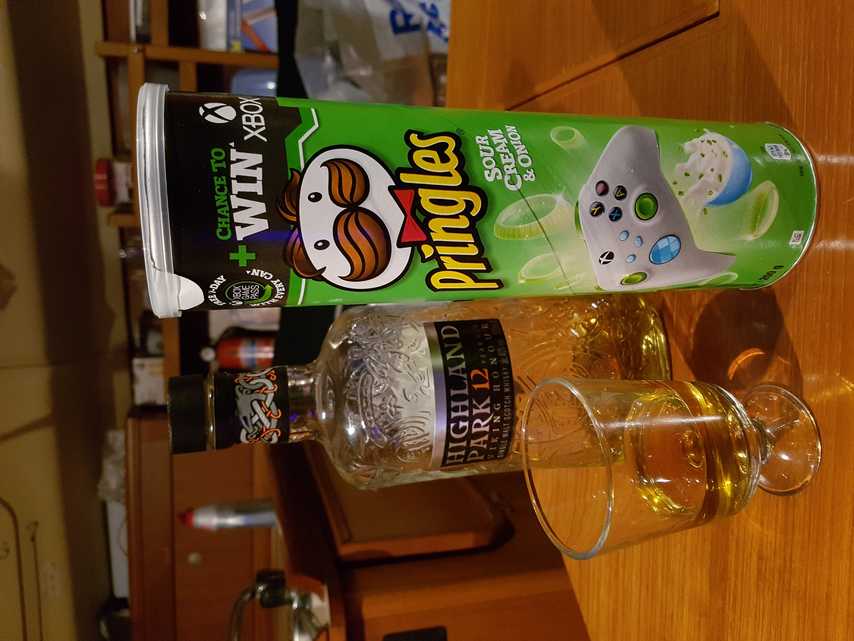
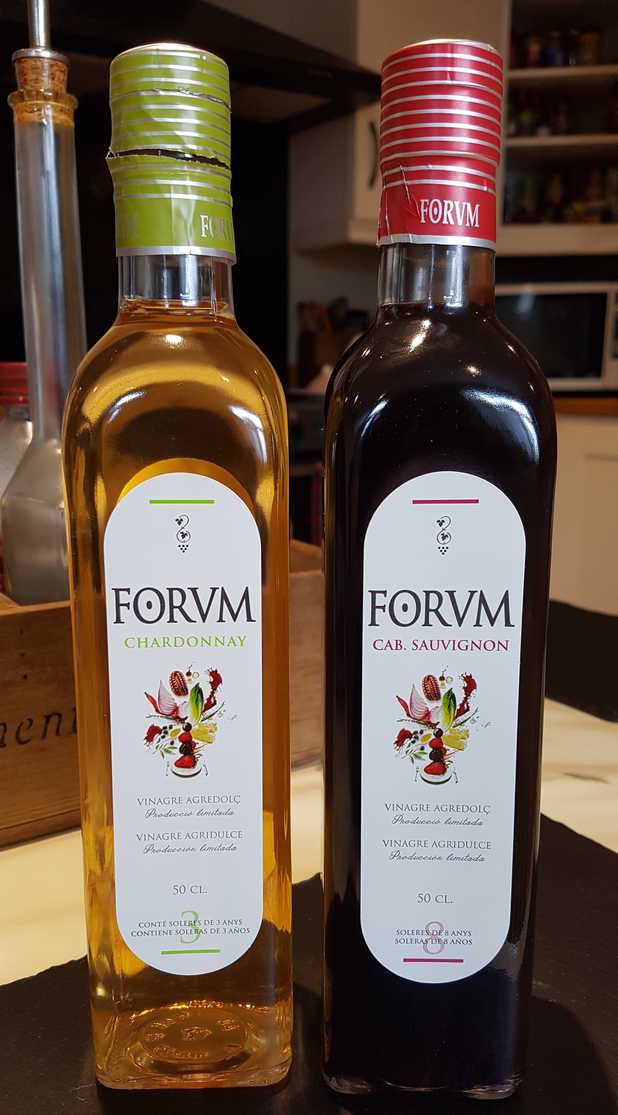
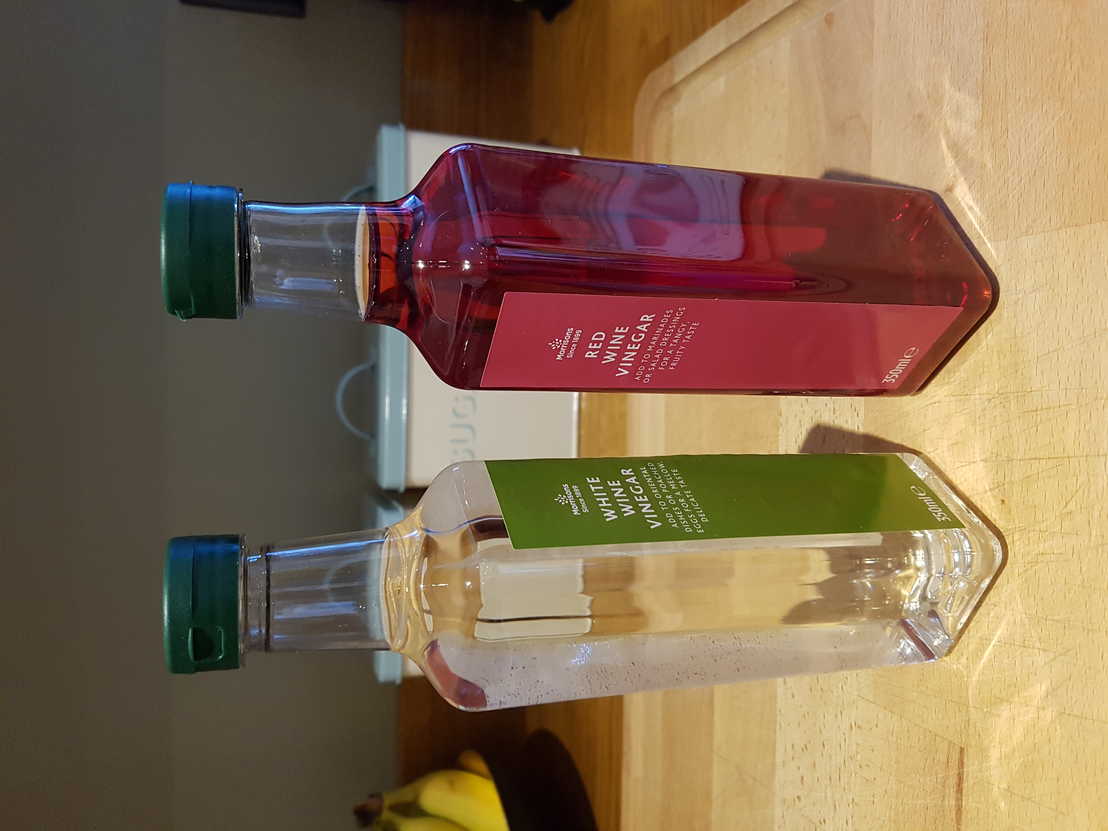
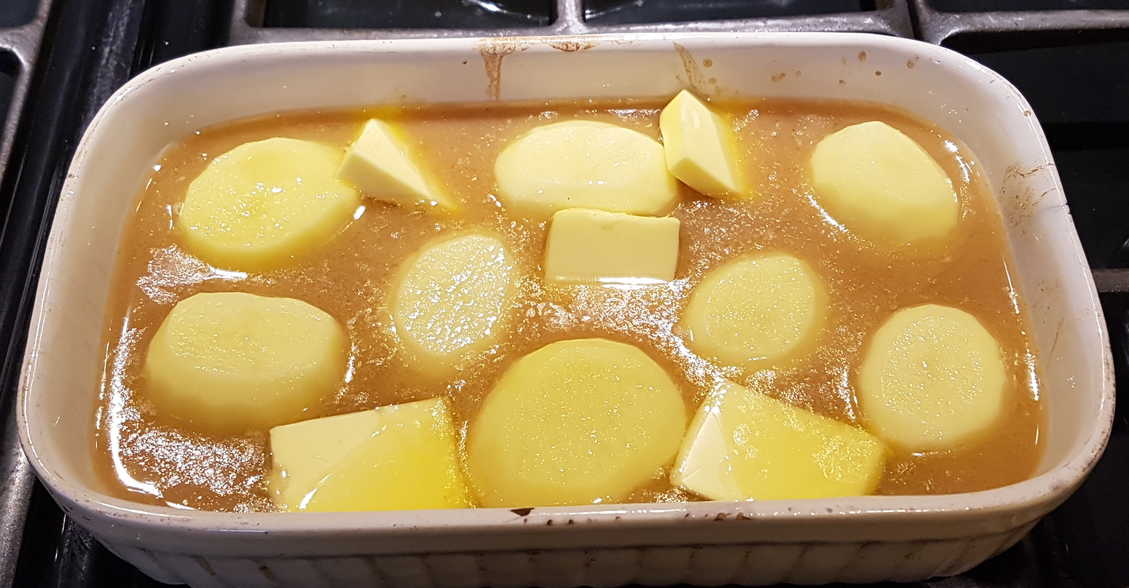
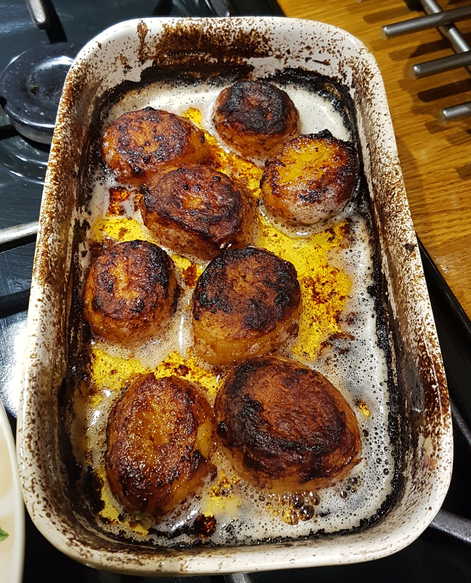
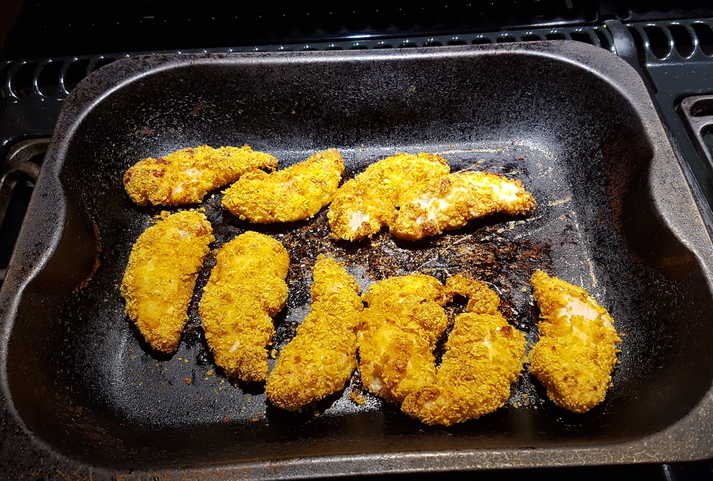

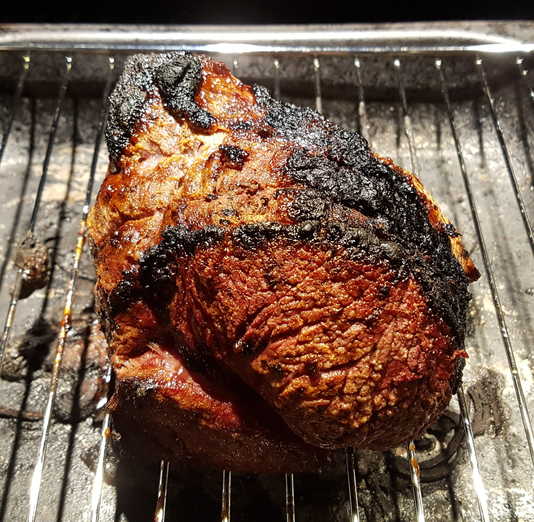
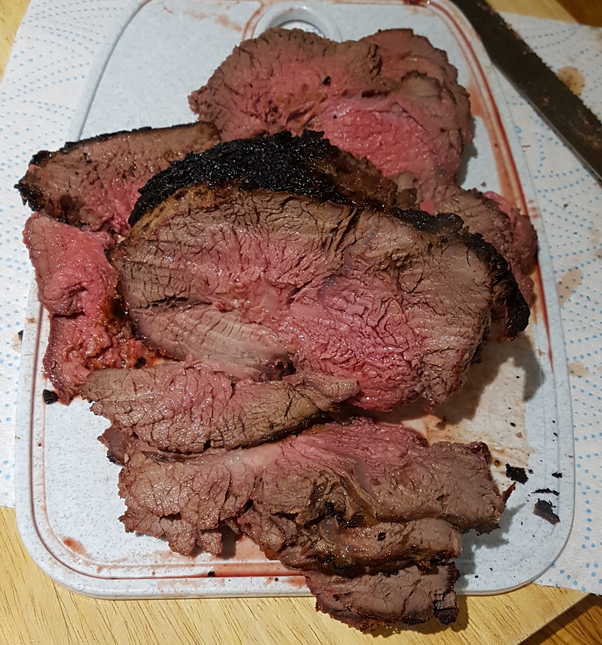
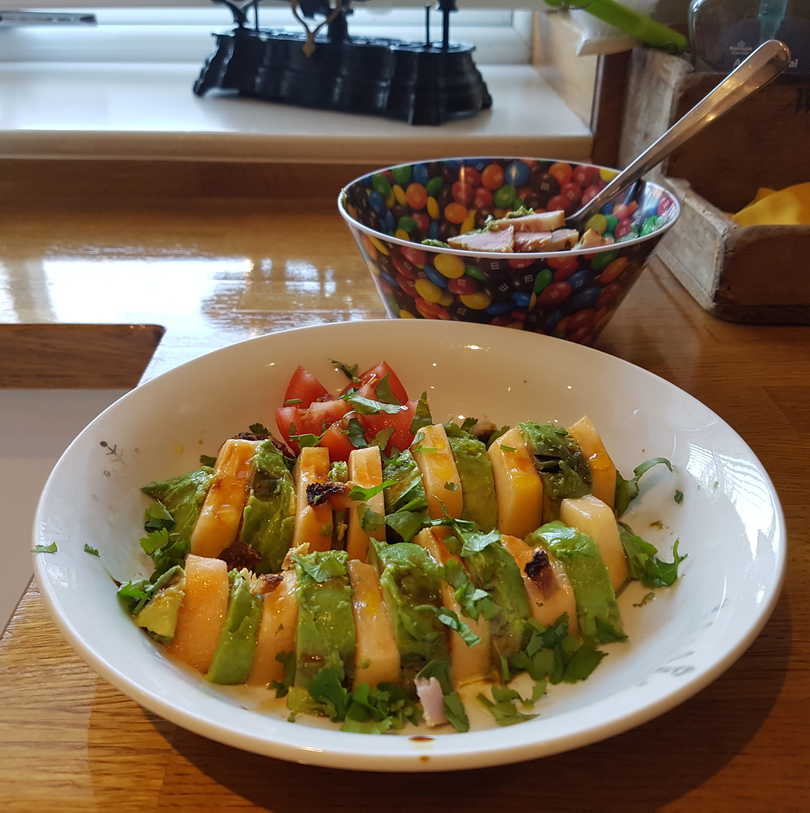
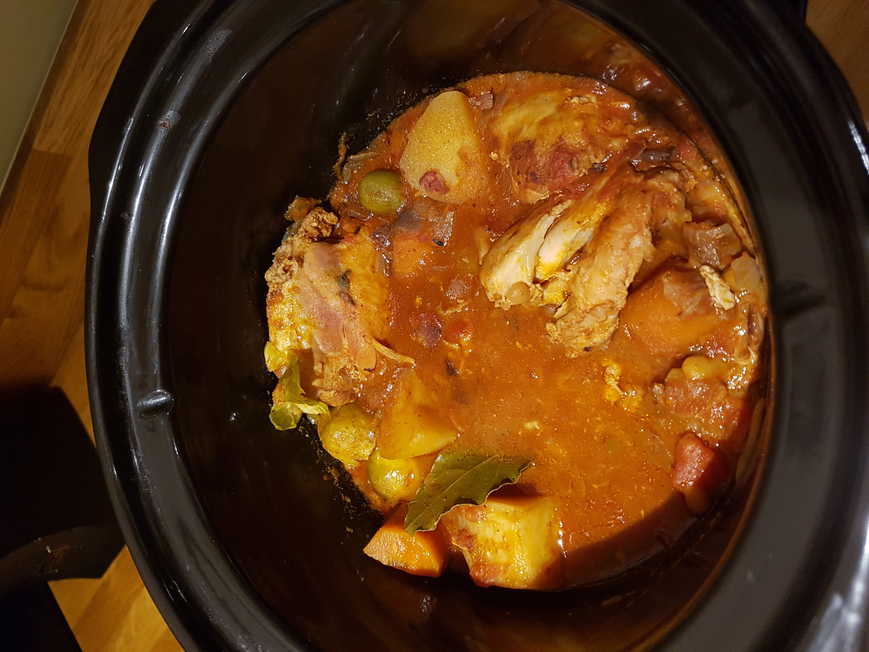

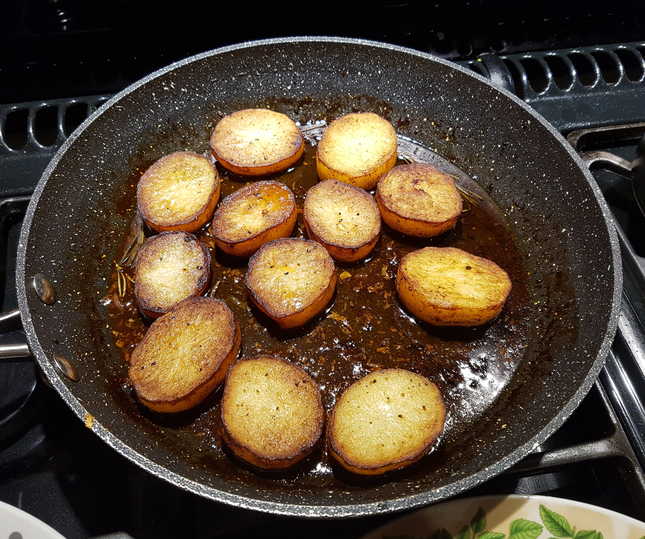
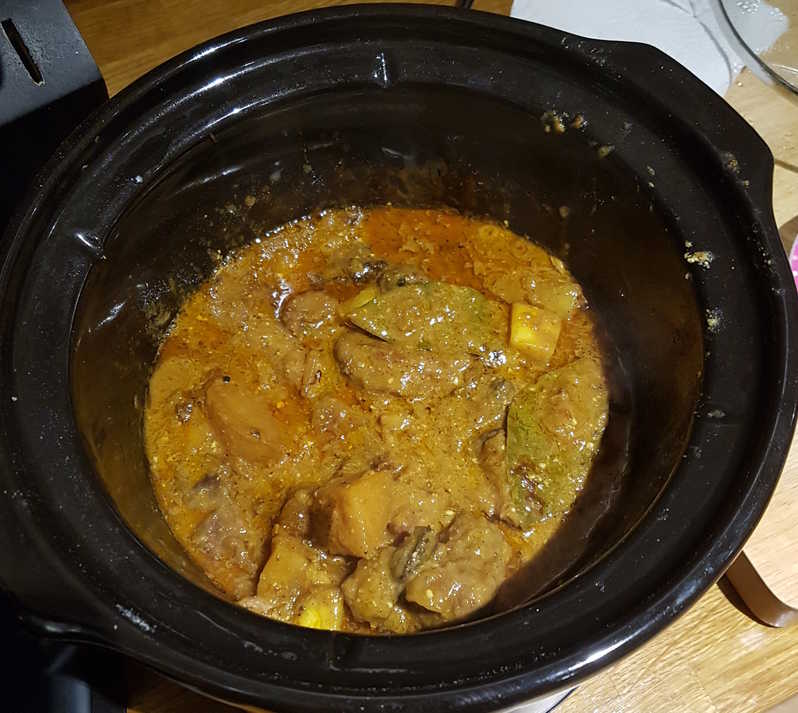
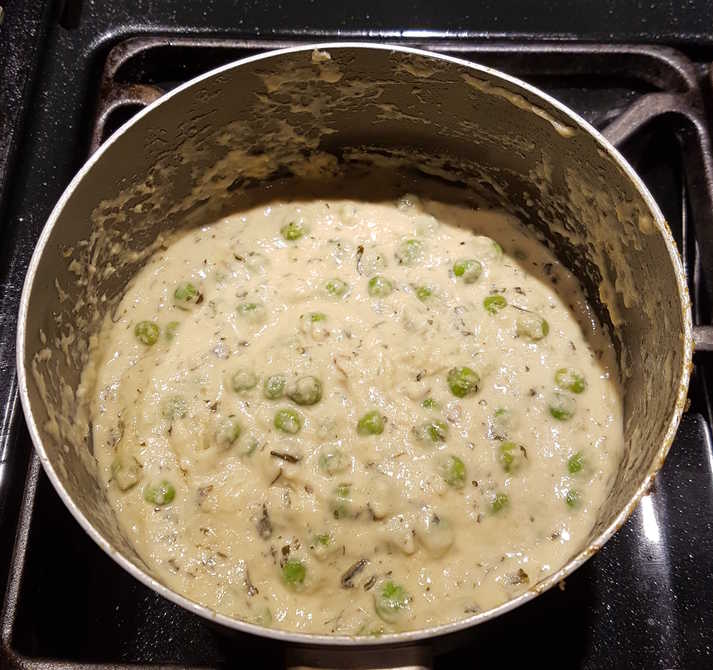
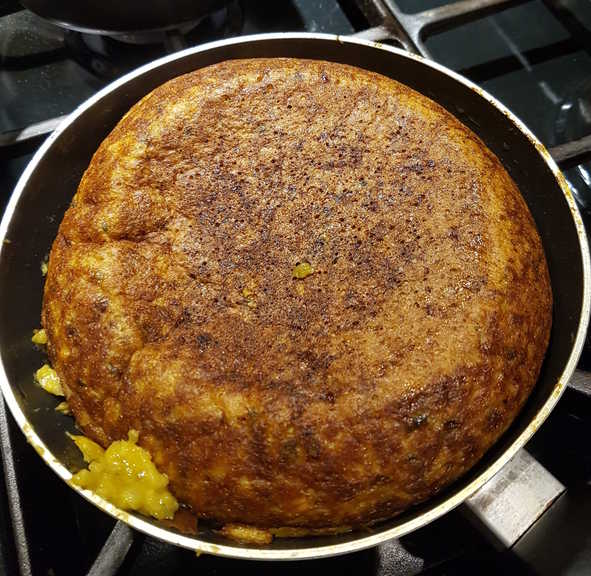
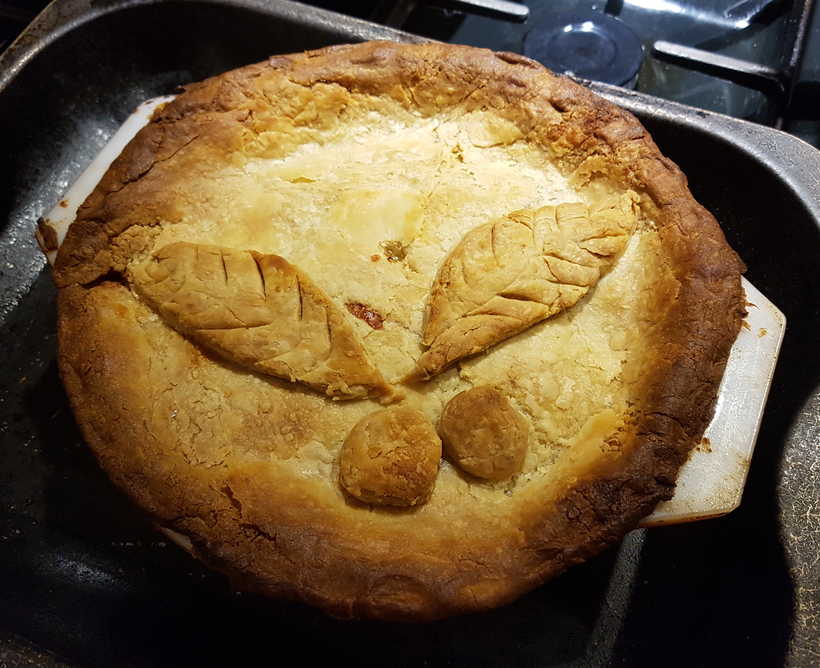
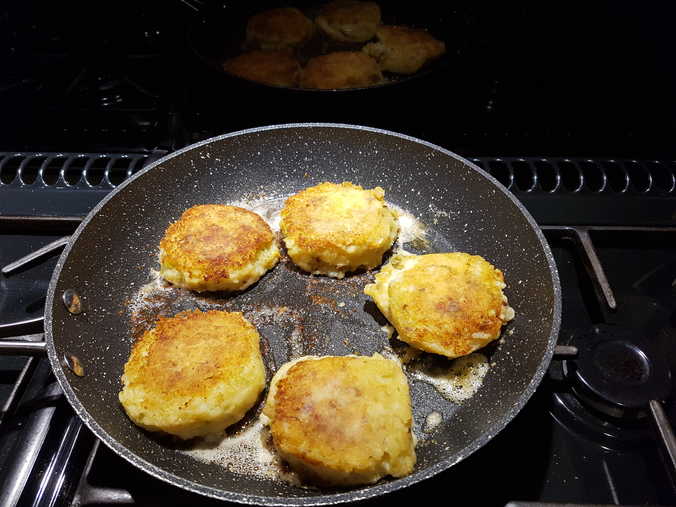





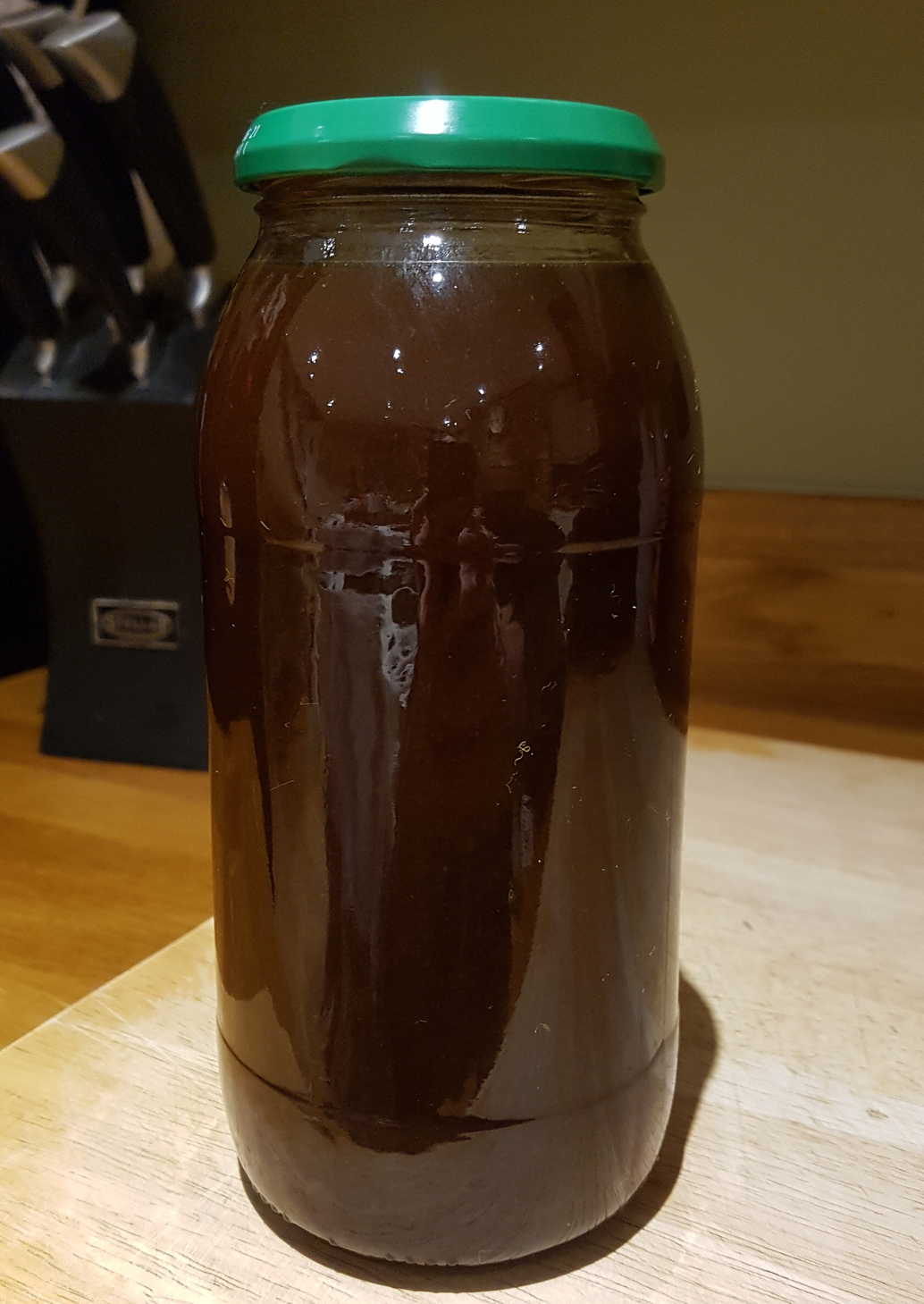
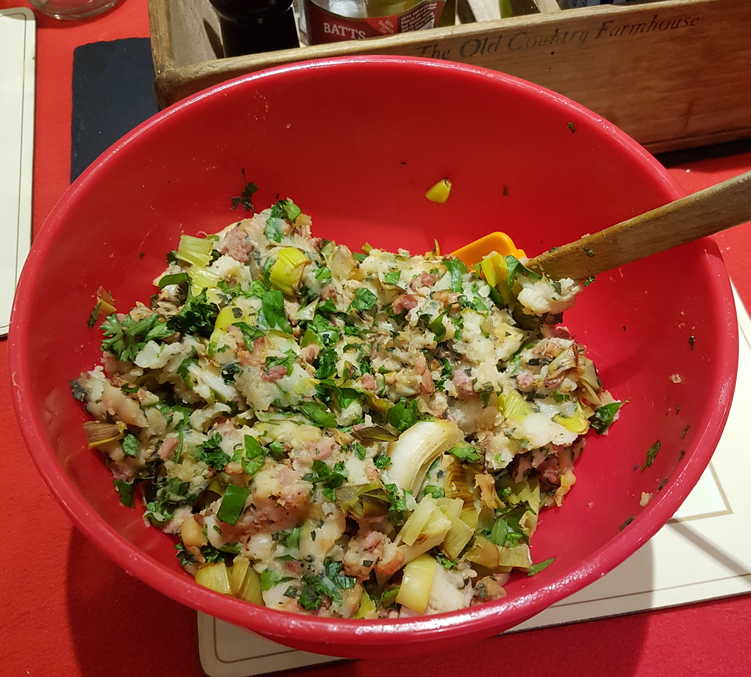

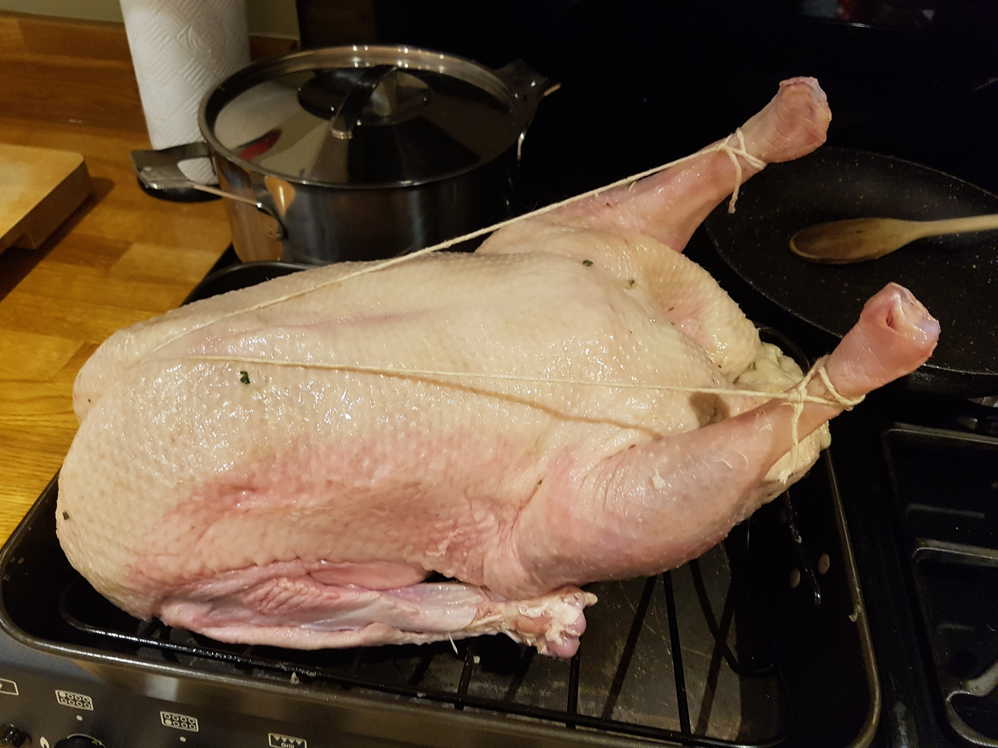
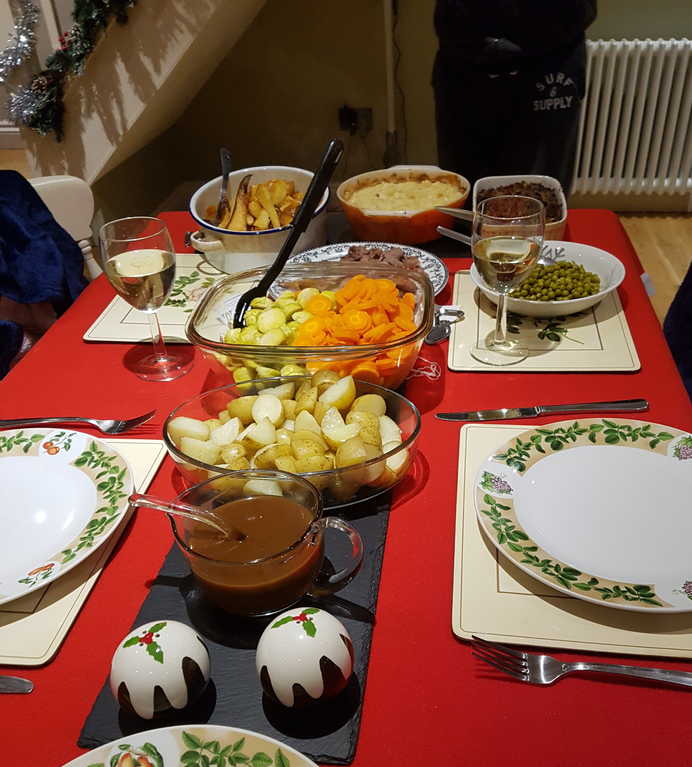
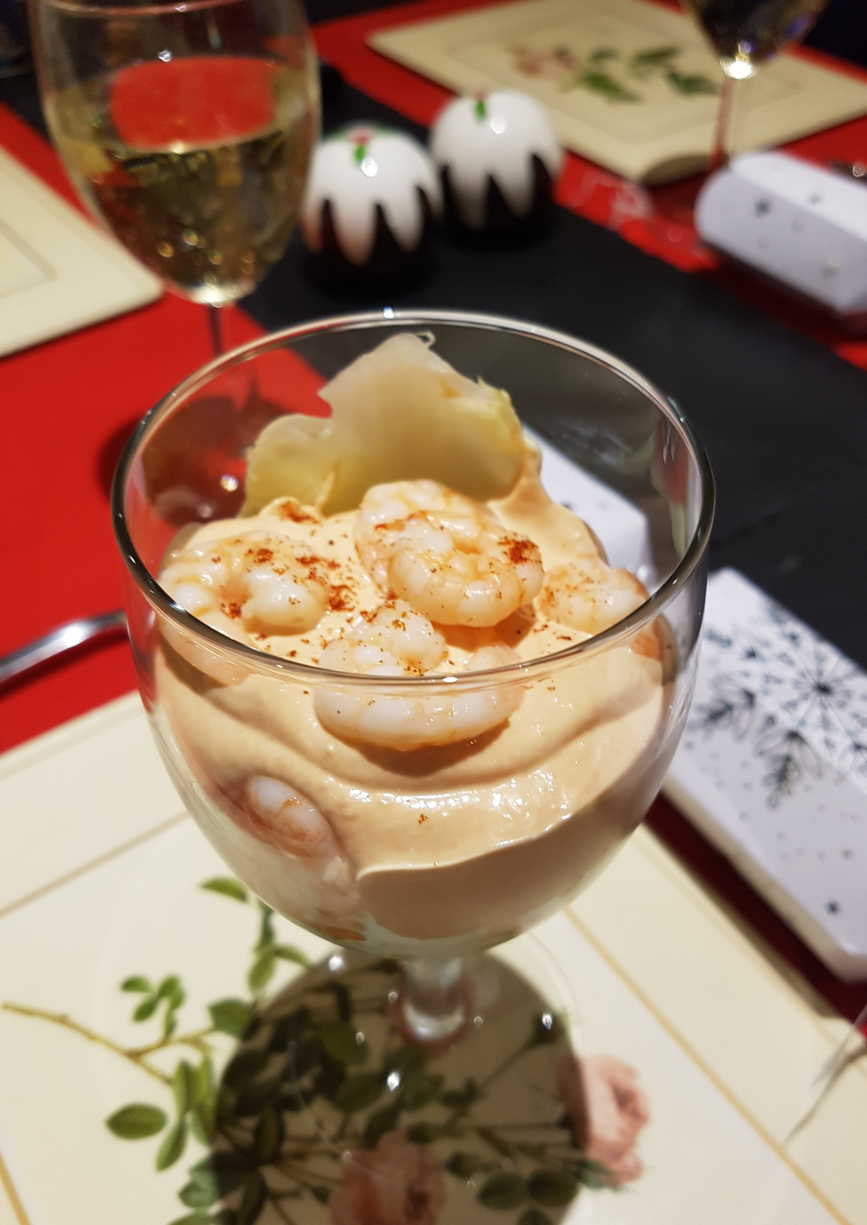
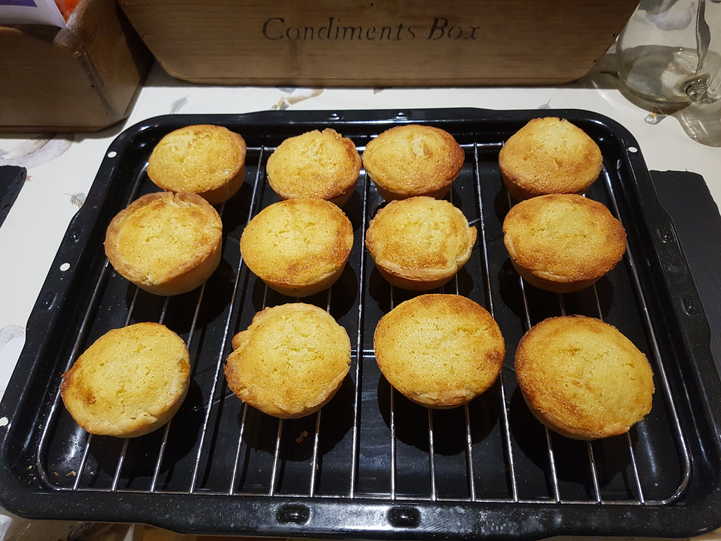
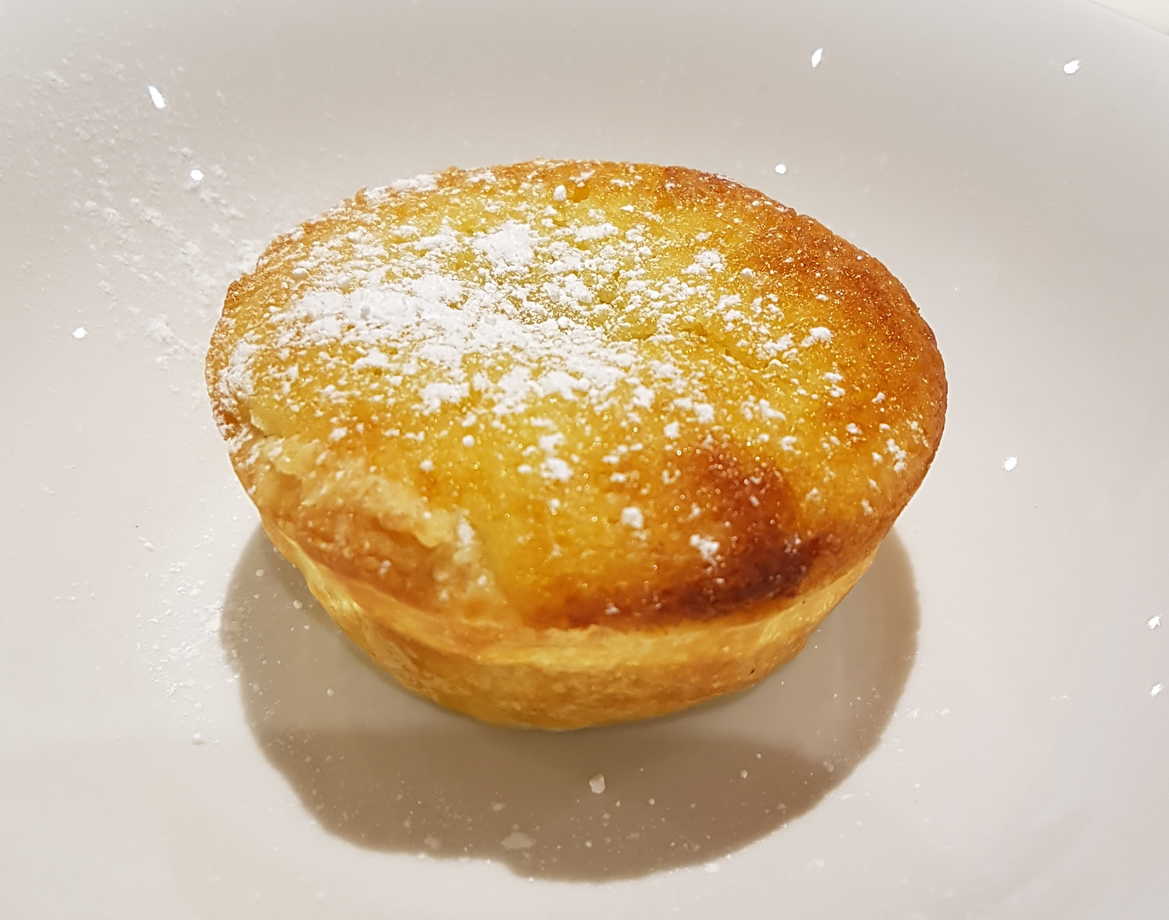


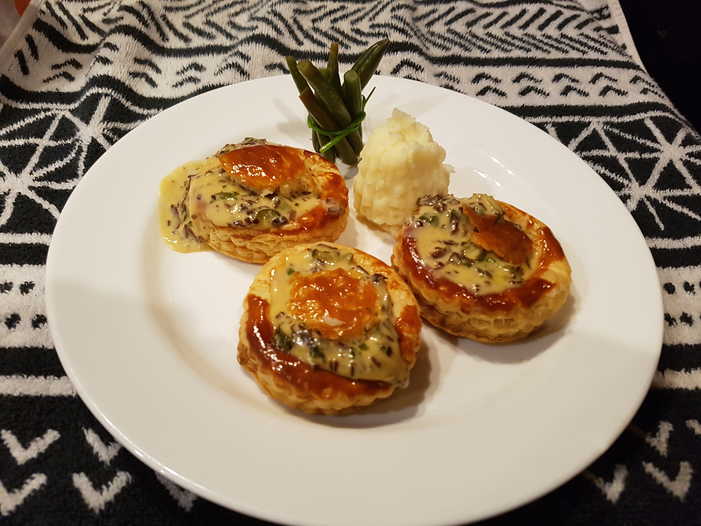
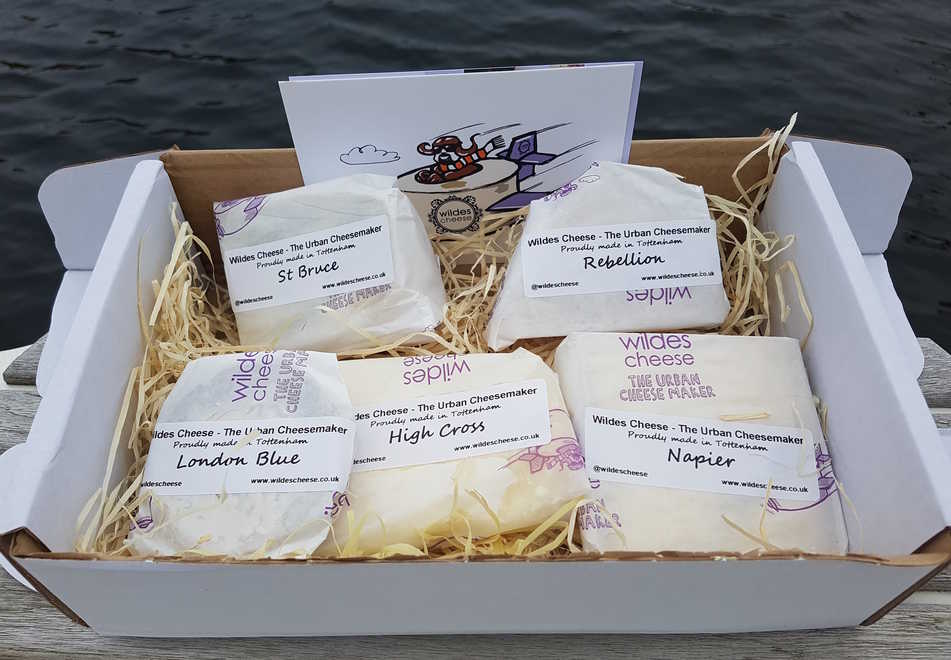
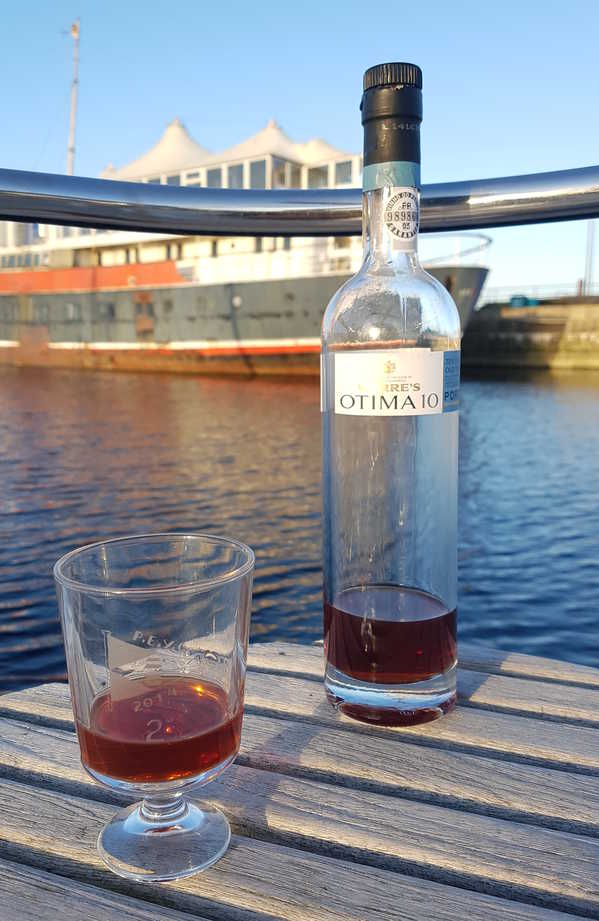
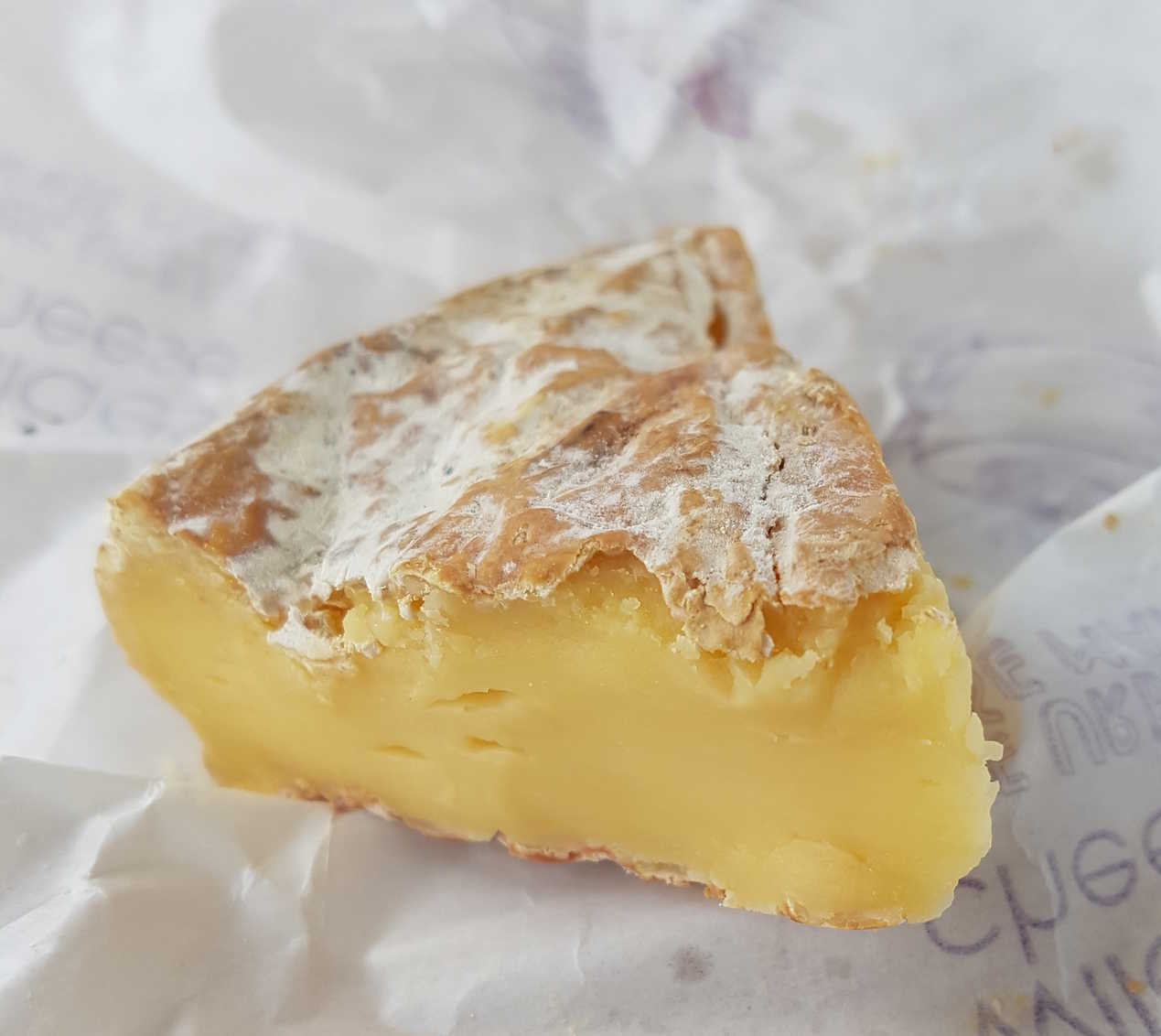
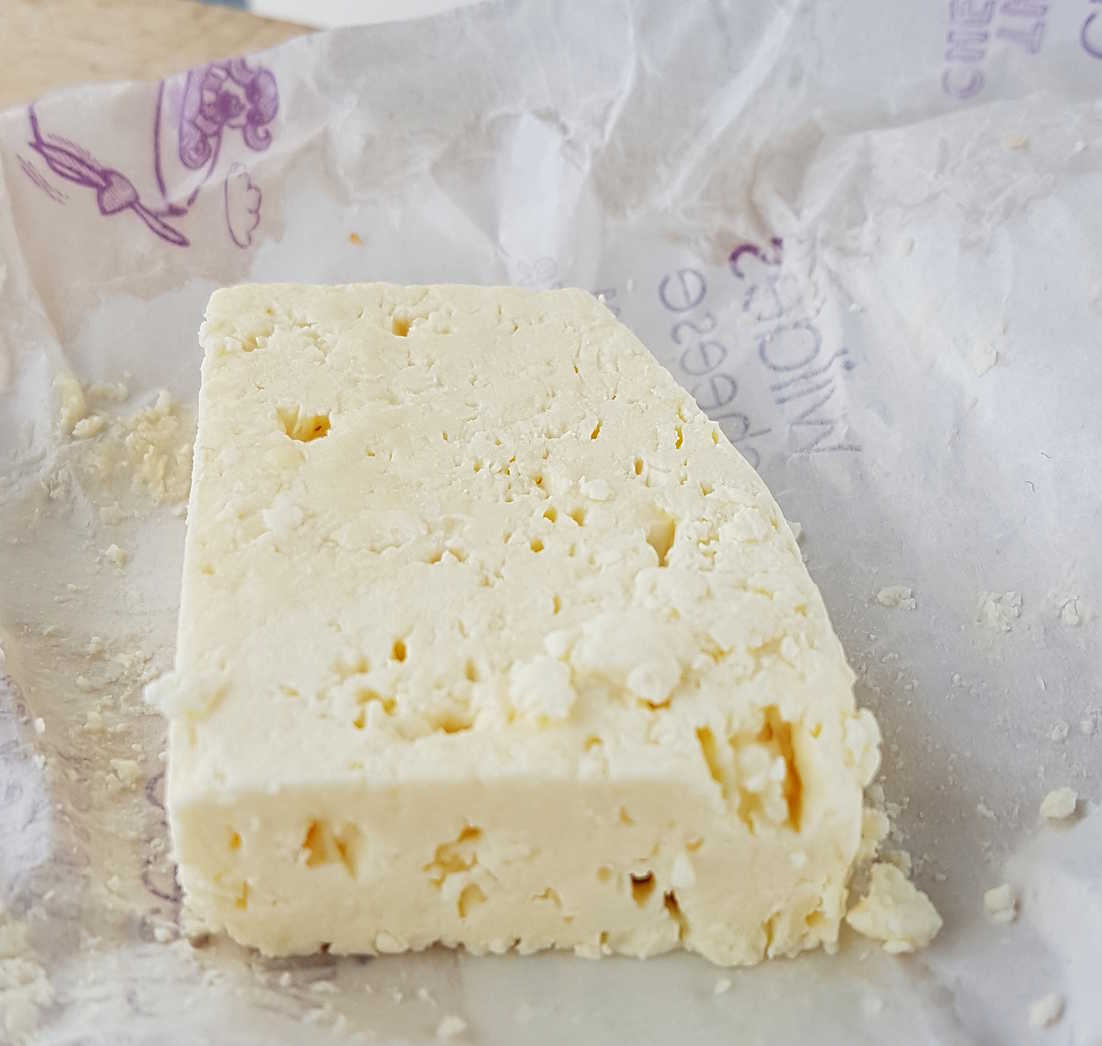
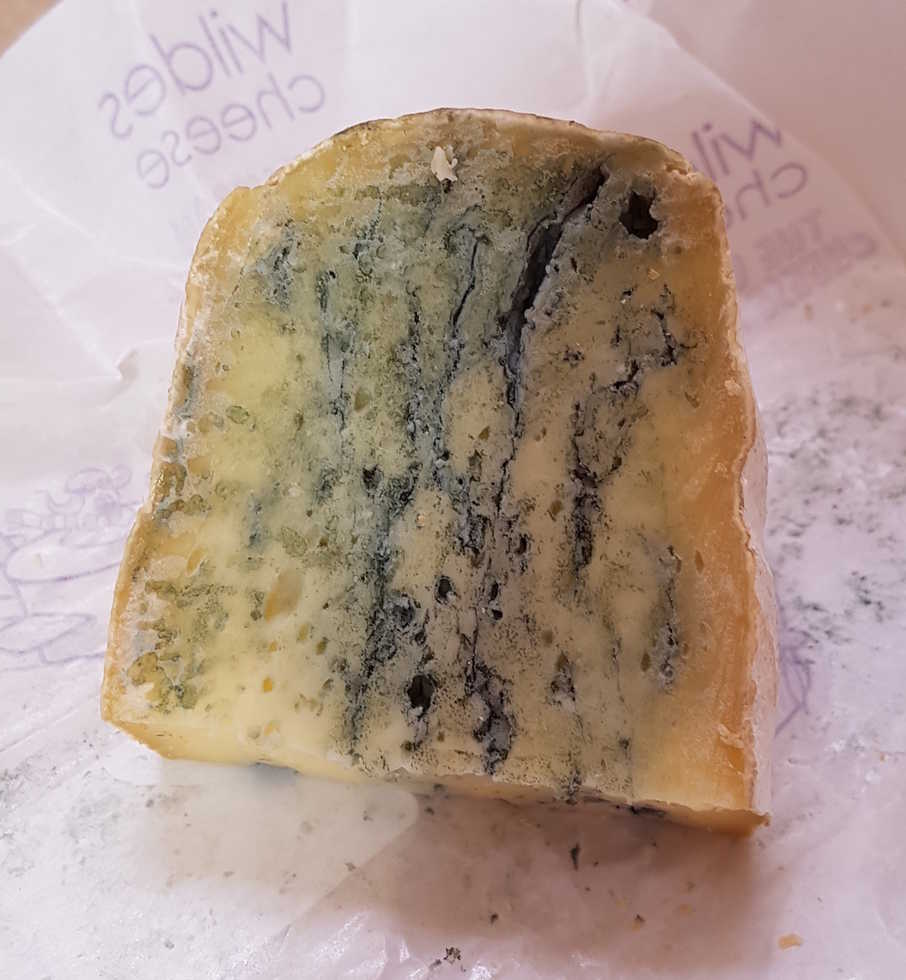
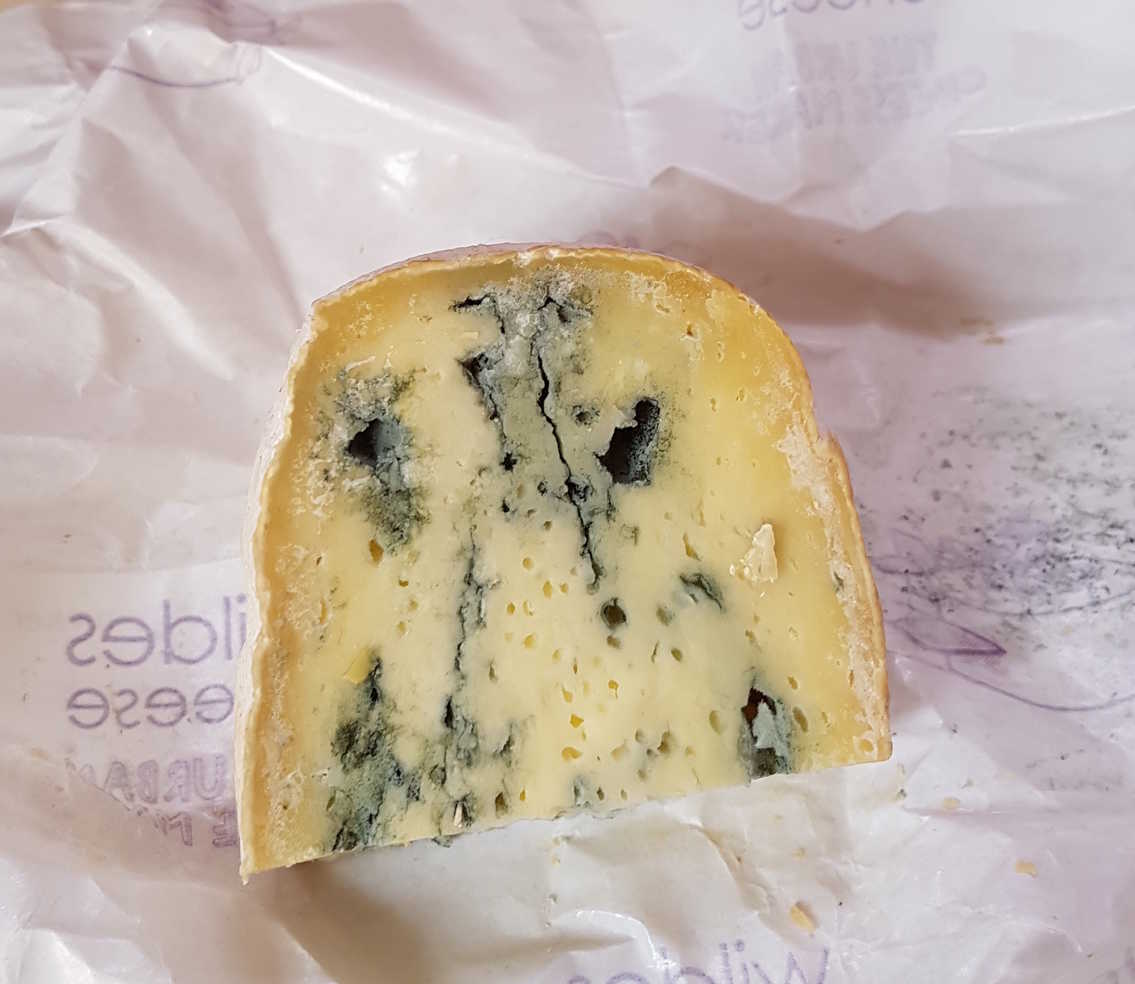
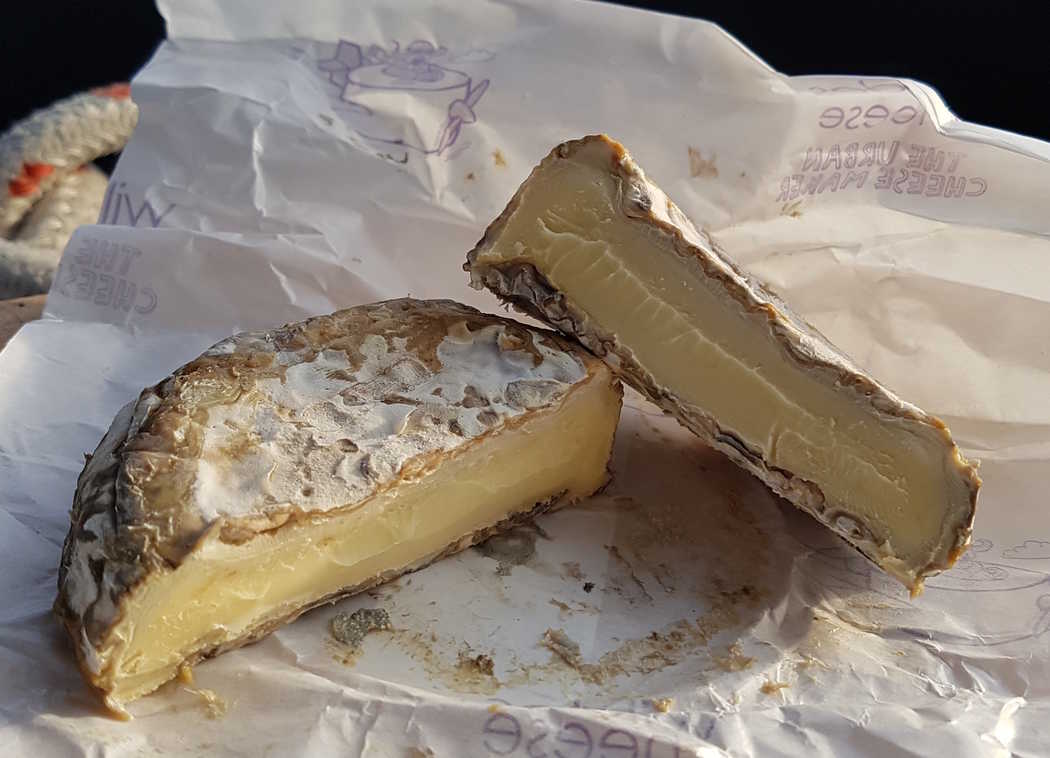
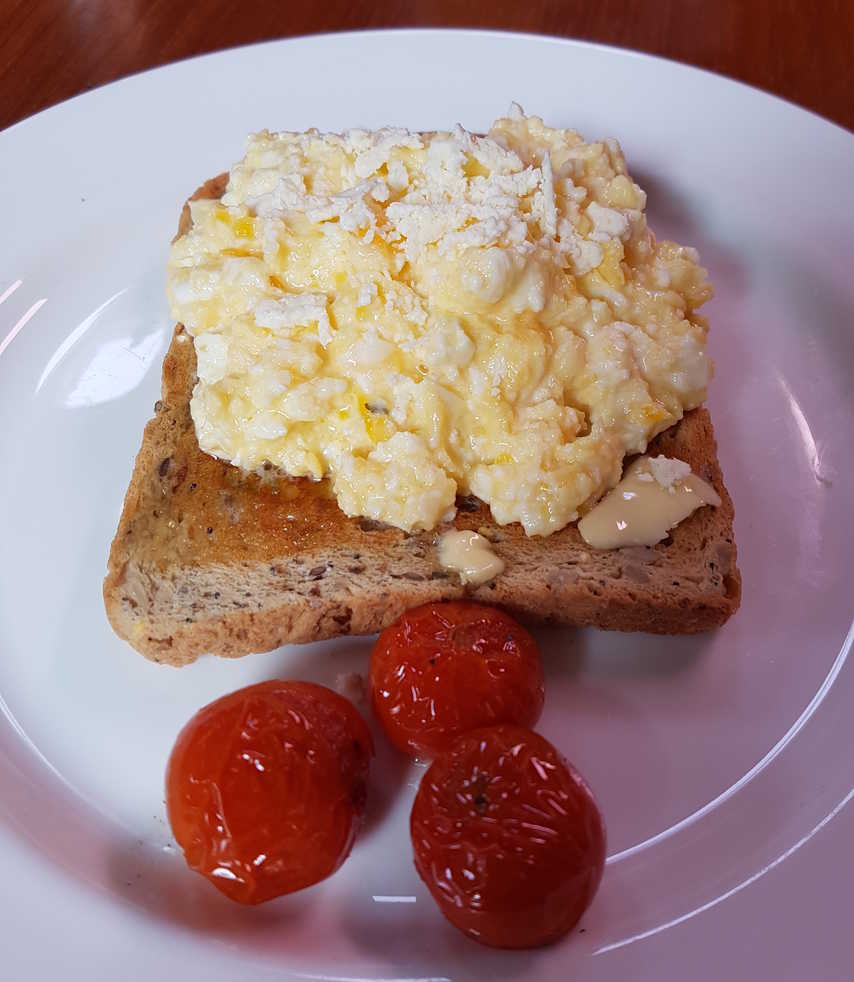
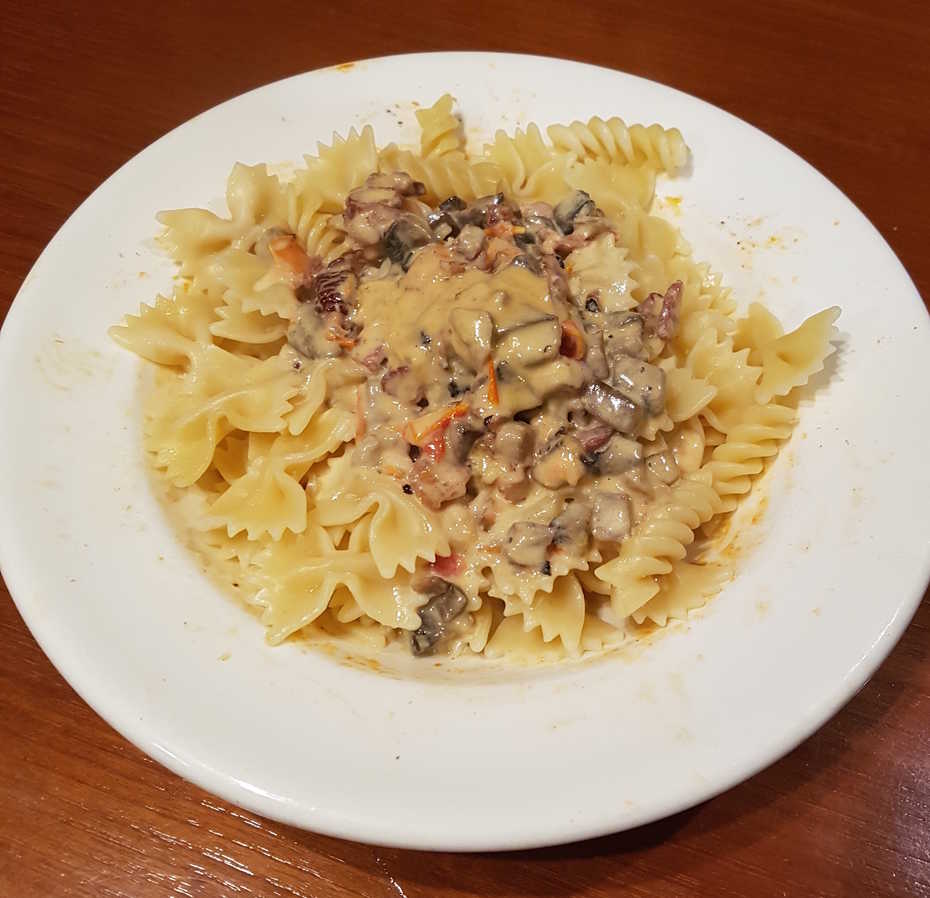





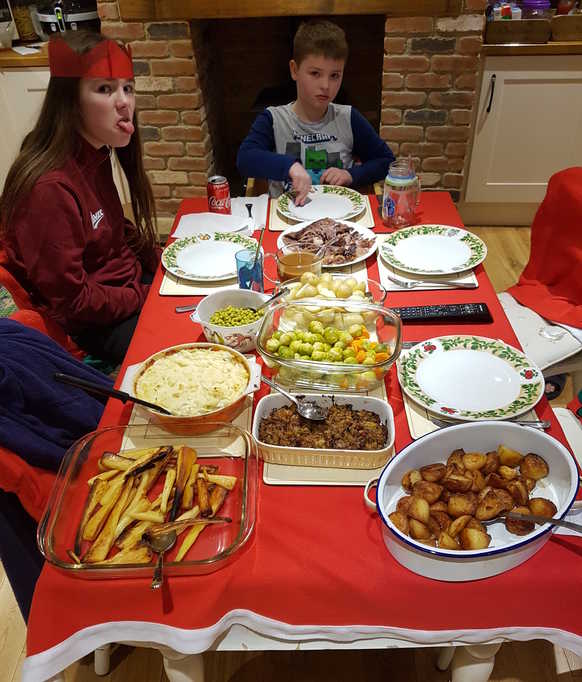
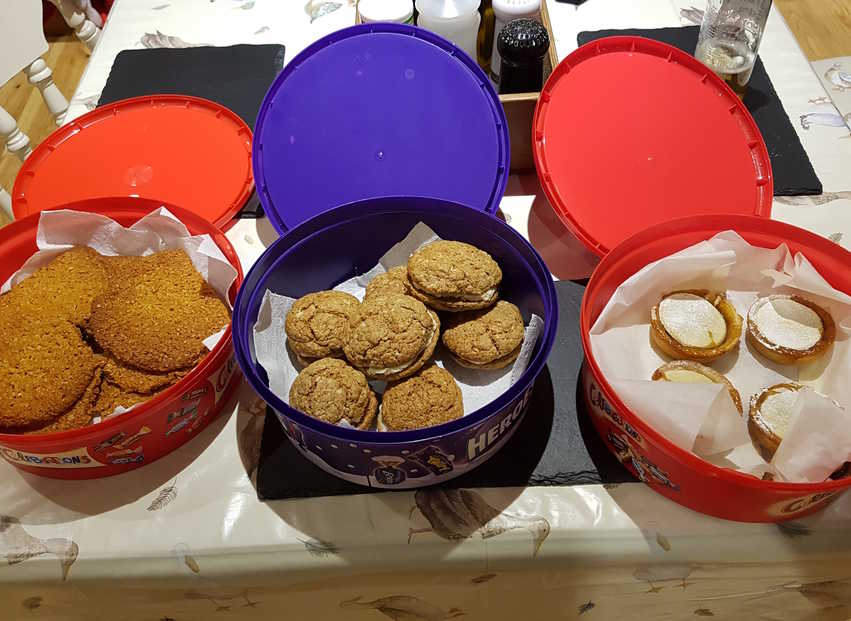



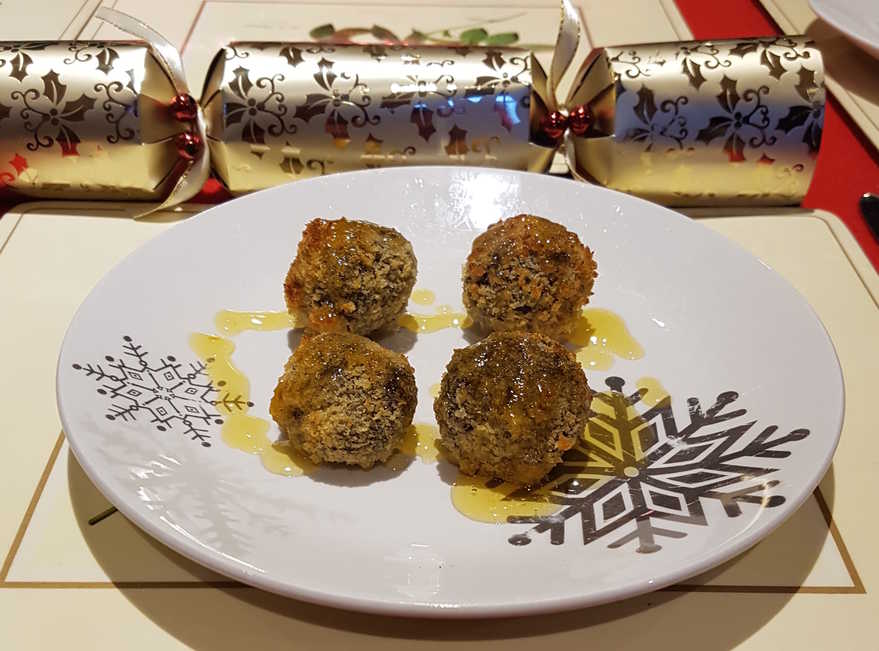
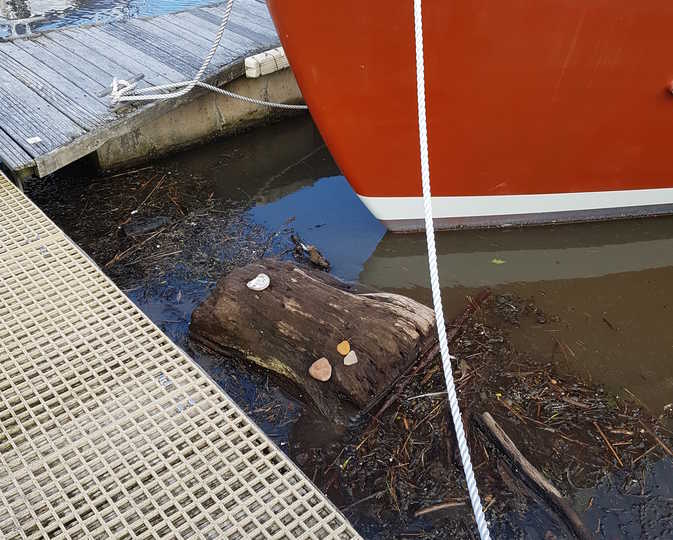

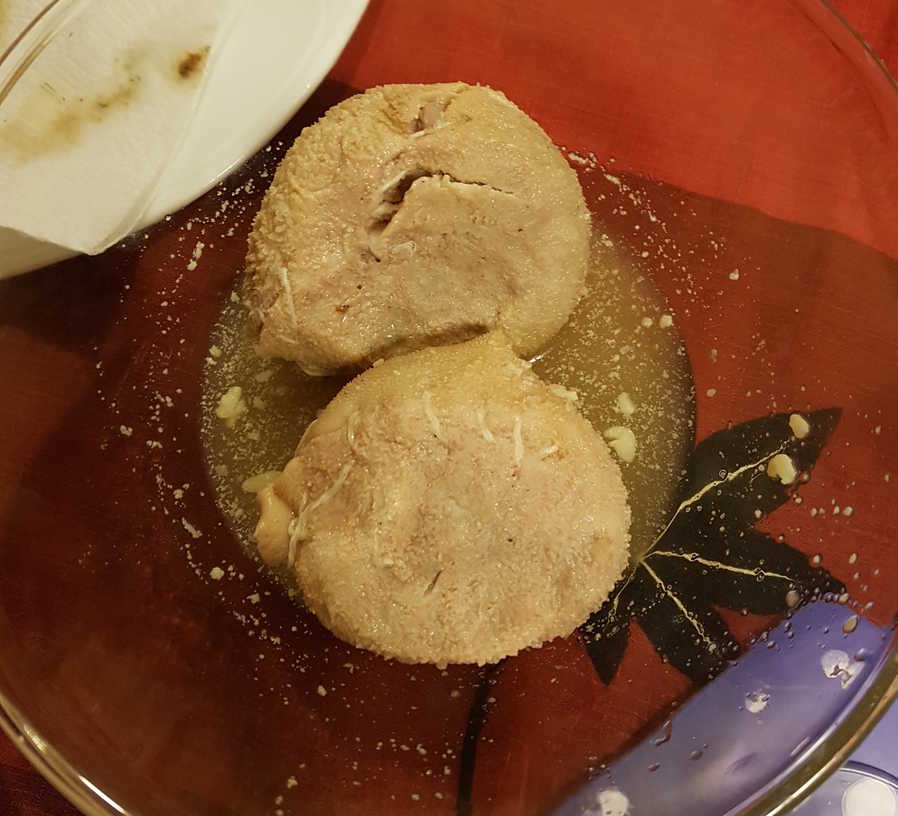


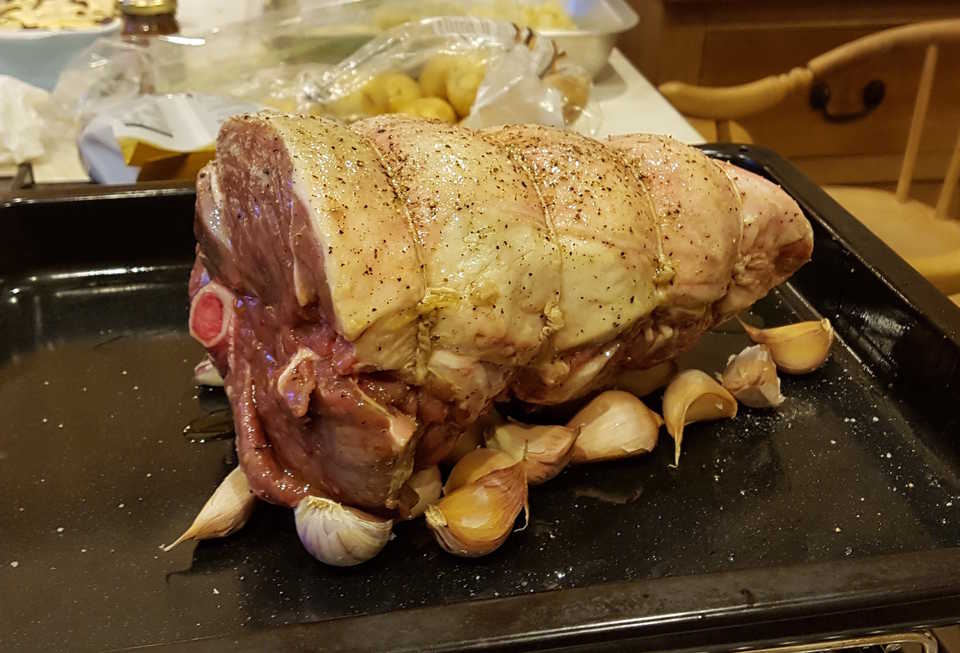

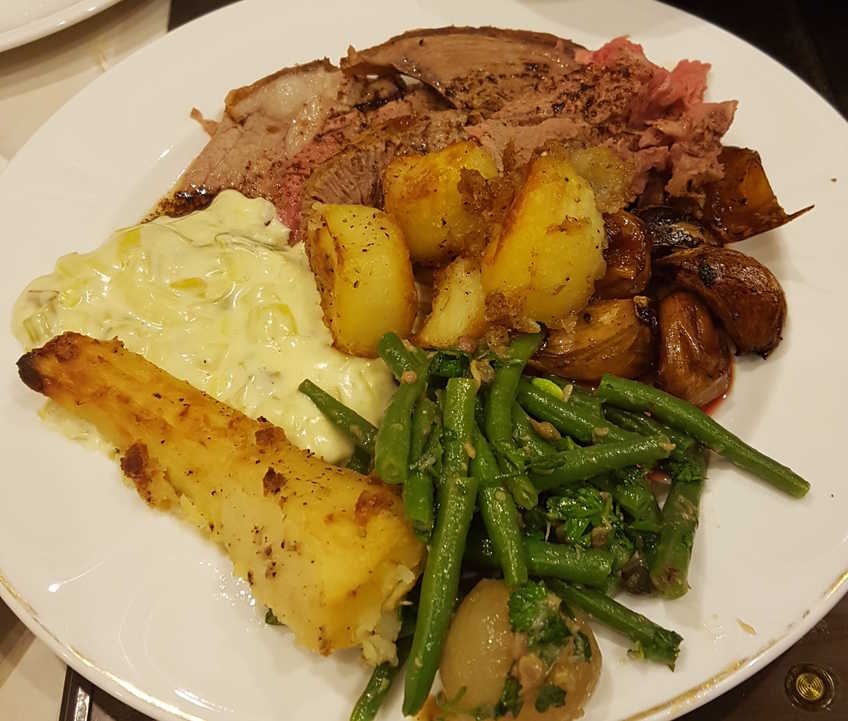
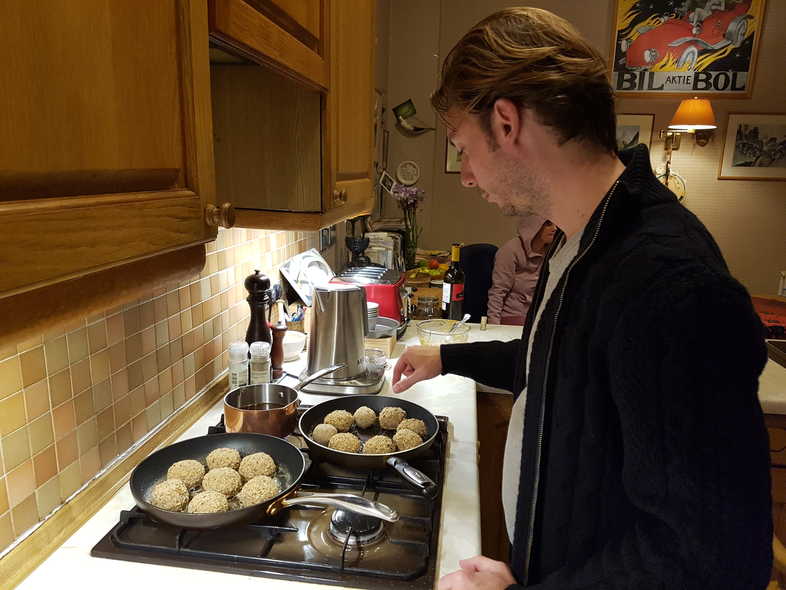
The chicken may take longer than advertised 😉